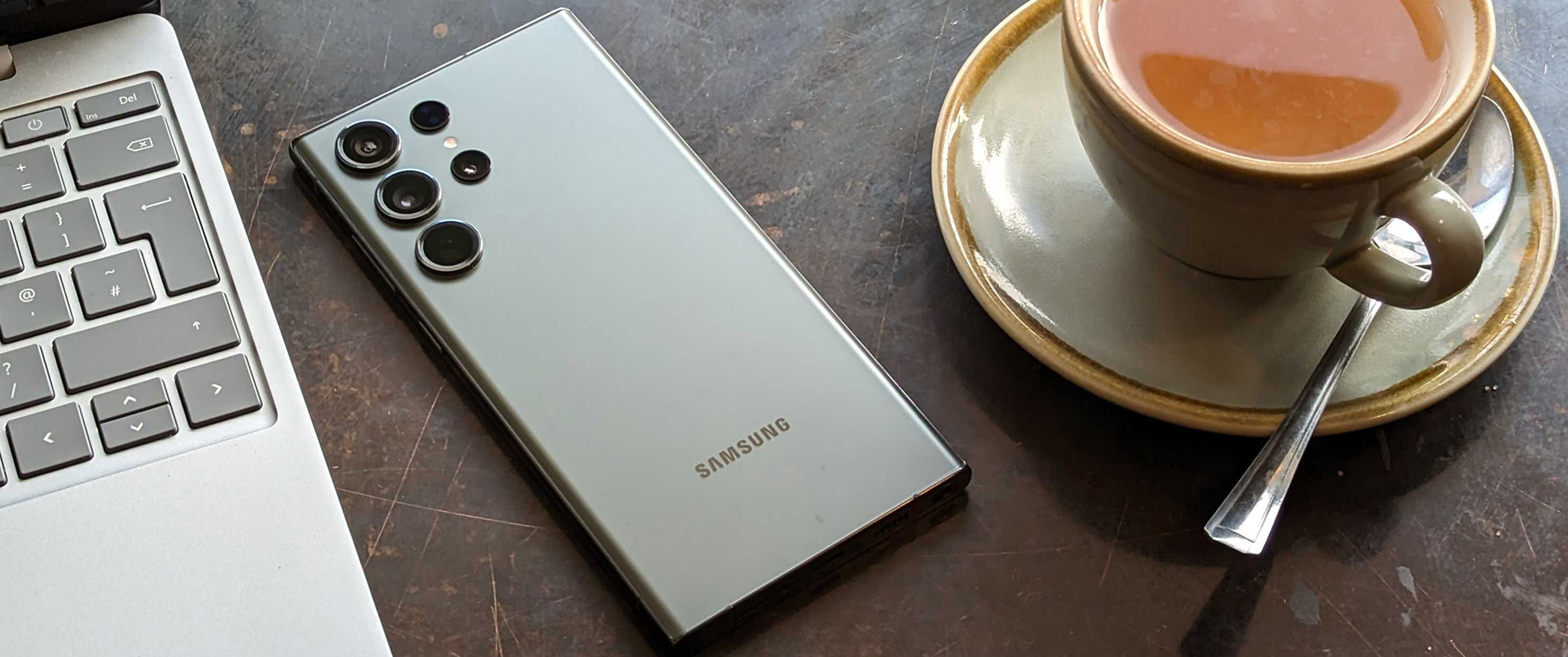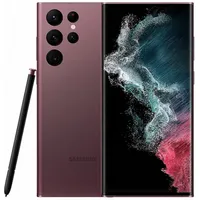TechRadar Verdict
A tougher build, faster memory and storage, a more efficient battery, a custom-tuned chipset and a new 200MP main camera hidden behind a familiar design; the S23 Ultra is a more substantial upgrade than you might first realize. Provided you're not dissuaded by the steep asking price, in every other regard you'll be getting one of the best phones in the world.
Pros
- +
Bespoke Qualcomm Snapdragon 8 Gen 2 chipset
- +
More base storage than predecessor
- +
Functional refinements
Cons
- -
Faster charging would have been nice
- -
Looks identical to predecessor
- -
Seriously expensive
Why you can trust TechRadar
Samsung Galaxy S23 Ultra: Two-minute review
The Galaxy S23 Ultra offers up a familiar face that, at a glance, looks identical to its predecessor. The changes are there though, they're just not as big as those you'll find on the Galaxy S23 and S23 Plus. (You can read our Complete Samsung Galaxy S23 review and our thorough Samsung S23 Plus review for more on those two phones).
A familiar squared design plays host to a tweaked display that offers a greater flat surface area, giving the S Pen stylus more room to work with. The front and back now sport the latest and most resilient Gorilla Glass Victus 2, and all the mod-cons from its predecessor – including IP68 dust and water resistance, and 45W wired charging – remain.
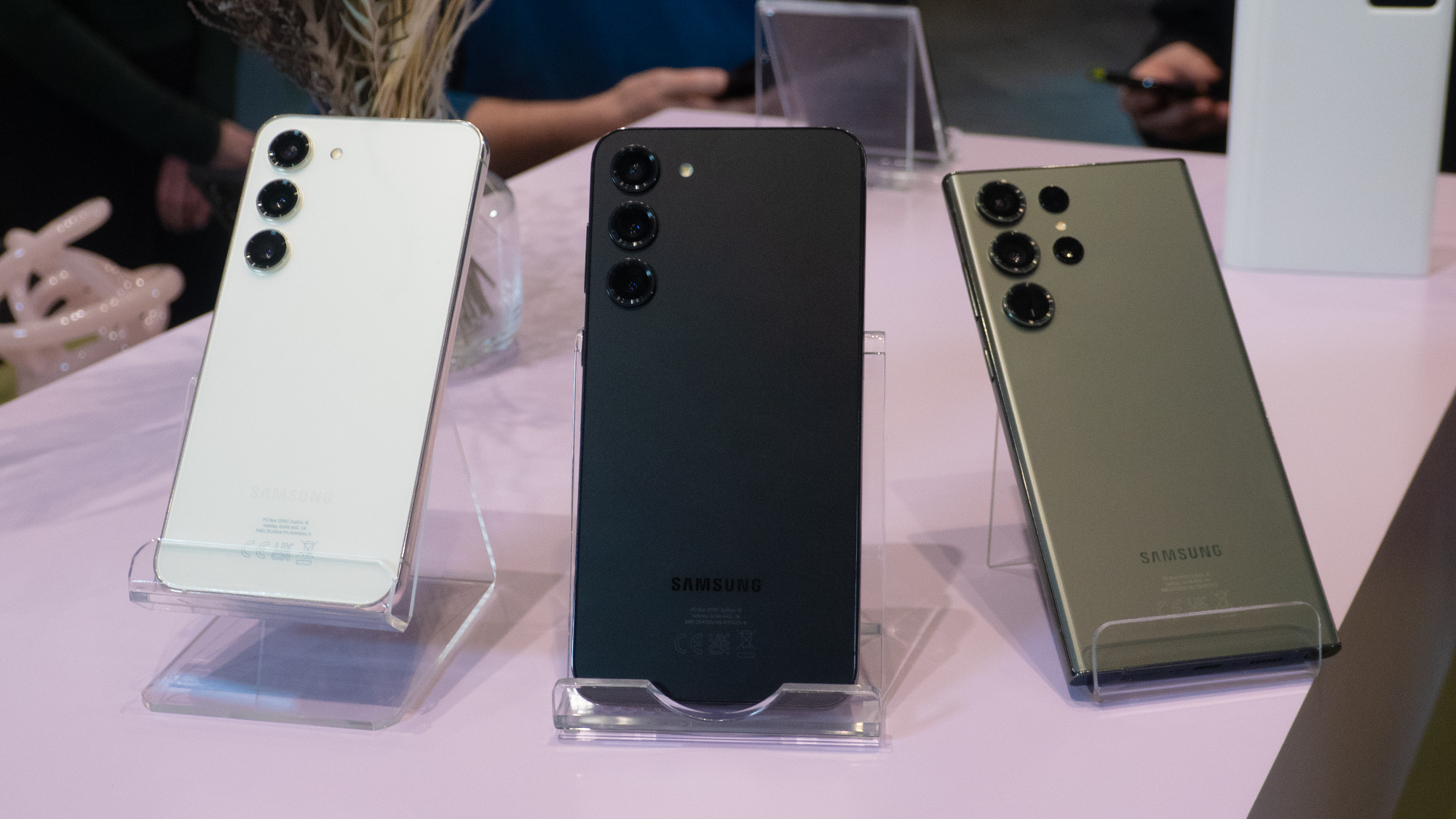
Samsung has also worked to integrate more recycled materials into the phone's design, with the likes of recycled fishing nets going into the construction of the S Pen's inner cover and the speaker module, for example.
Some elements – like the 6.8-inch 1Hz to 120Hz adaptive Dynamic AMOLED 2X display and the 5,000mAh battery – have received seemingly minor tweaks (greater color accuracy and 20% improved efficiency, in the case of the above examples, respectively).
On the inside, however, there are some bigger changes, like the new 'Snapdragon 8 Gen 2 Mobile Platform for Galaxy' that Samsung and Qualcomm have collaborated on; purpose-built to offer rival-beating performance (51% better NPU performance, 41% better GPU performance and 33% greater CPU performance than previously, according to Samsung). The Ultra – along with the Galaxy S23 and Galaxy S23 Plus – is also one of the first phones out there to boast faster and more efficient LPDDR5X RAM and UFS 4.0 storage.
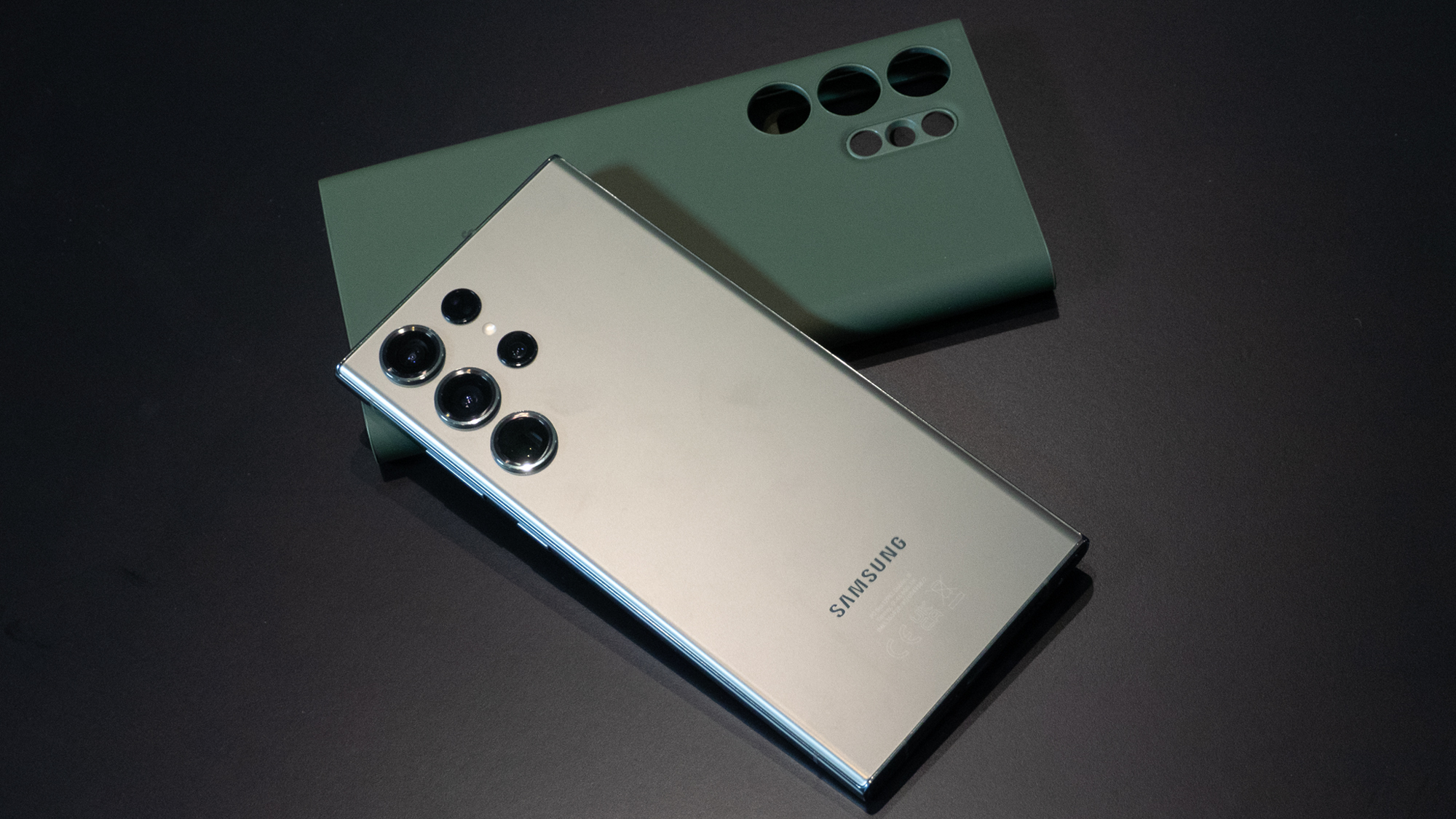
A familiar-looking rear four-camera rear array hides a new 200MP lead sensor that offers 16-to-1 pixel-binning, with the aim of advancing the S23 Ultra's 'Nightography' abilities for everything from general snaps, to portrait photography, to videos of the night sky using the new Astro Hyperlapse mode and in practice, although imperfect, you'll be hard-pressed to find an alternative phone with the same level of consistency, quality and confidence across its various sensors.
Those who want to shoot with greater control now also benefit from enhanced editing control too, with the ability to work with shots at up to 50MP captured in Expert RAW mode.
Sign up for breaking news, reviews, opinion, top tech deals, and more.
You still get a 12MP ultrawide and dual telephoto lenses at 3x and 10x (periscopic) zoom, respectively, granting the S23 Ultra the same degree of class-leading camera versatility offered up by the last couple of generations of Ultra.
Samsung has also renewed its commitment to offering up to four years of OS updates and five years of security updates, across the Galaxy S23 series. All three arrive with One UI 5.1 atop Android 13, which folds in better collaborative working in Samsung Notes and an enhanced Privacy Dashboard, among other things.
While the starting price (in the US, at least) remains consistent with the Galaxy S22 Ultra's base price, Samsung has doubled the entry-level storage to 256GB, while the top-tier model can be had with 12GB of RAM (up from 8GB on the base version) and a whopping 1TB of storage.
For a deeper dive, head on to the full in-depth review below, but know that, provided you're comfortable with the Ultra's high asking price, there's little to be disappointed by here.
Samsung Galaxy S23 Ultra review: Price and availability
- Starts at $1,199.99 / £1,249 / AU$1,949
- Same US starting price despite double the storage YoY
- Top 1TB model is more expensive YoY across key markets
| RAM / Storage | US price | UK price | AU price |
| 8/256GB | $1,199.99 | £1,249 | AU$1,949 |
| 12/512GB | $1,379.99 | £1,399 | AU$2,249 |
| 12/1TB | $1,619.99 | £1,599 | AU$2,649 |
The Galaxy S23 Ultra launched alongside its anticipated siblings – the standard Galaxy S23 and Galaxy S23 Plus – on February 1, with pre-order availability kicking off on the same day and running until February 16. The Galaxy S23 Ultra is available to buy as of Friday, February 17 (check out the best Samsung Galaxy S23 Ultra deals in our dedicated article).
One of the nice fundamental upgrades over the Galaxy S22 Ultra is that base storage has been doubled to 256GB (or rather, there simply is no 128GB S23 Ultra), which benefits US customers in particular, as they're being asked to pay no more than they were for the base 128GB S22 Ultra, when it launched, at $1,199.99.
The 512GB model is $20 cheaper compared to its predecessor, at $1,379.99, while the top-tier Samsung.com-exclusive 1TB storage variant costs $20 more, at an eye-watering $1,619.99.
Things are generally worse for UK customers when comparing to the S22 Ultra's pricing, with the baseline S23 Ultra costing the same as last year's 256GB model at £1,249, while the 512GB and 1TB versions are £70 and £100 more expensive each; at £1,399 and £1,599, respectively.
Compared to the S22 Ultra, Australian customers pay AU$50 less than the 256GB S22 Ultra cost last year, at AU$1,949. The 512GB version, meanwhile, is AU$100 more this year, while the top 1TB S23 Ultra is AU$200 more, compared to the price of its 2022 predecessor.
Whichever storage configuration you pick, being asked to pay a premium for Samsung's best shouldn't come as too much of a shock in a market that also plays host to the similarly-priced iPhone 14 Pro Max and a growing contingent of foldable phones that almost all comfortably push past the $1,000 / £1,000 / AU$1,600 mark.
- Value score: 3.5 / 5
Samsung Galaxy S23 Ultra review: Specs
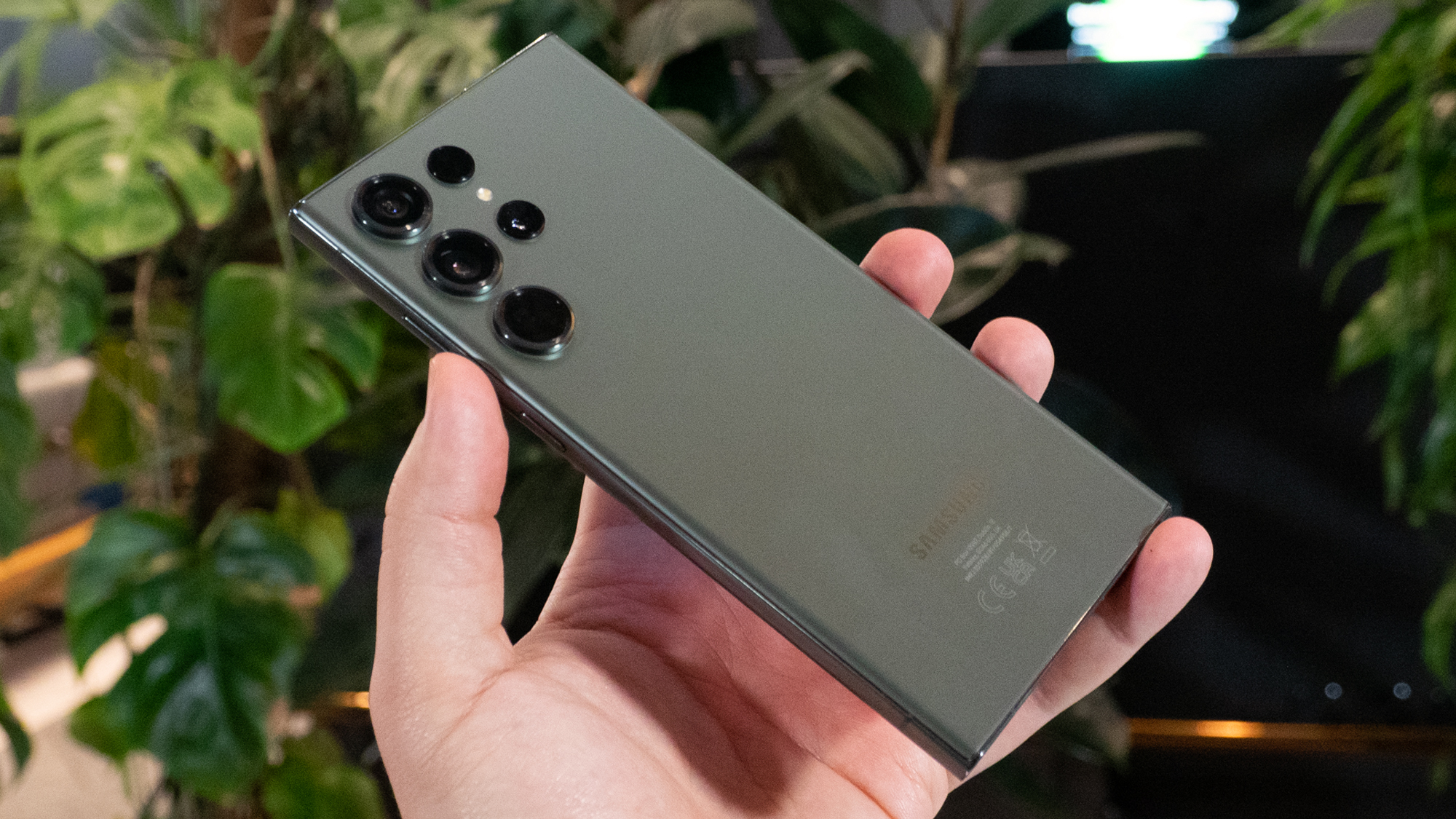
The Samsung Galaxy S23 Ultra comes in three storage configurations, with 8GB of RAM in the base model and 12GB in the two higher storage models.
Specs otherwise remain consistent across all three variants.
| Header Cell - Column 1 | |
|---|---|
| Dimensions: | 78.1 x 163.4 x 8.9mm |
| Weight: | 234g |
| Screen: | 6.8 inch 120Hz Dynamic AMOLED 2X |
| Resolution: | 3088 x 1440 pixels |
| CPU: | Qualcomm Snapdragon 8 Gen 2 Mobile Platform for Galaxy |
| RAM: | 8GB / 12GB |
| Storage: | 256GB / 512GB / 1TB |
| OS: | Android 13 w/ One UI 5.1 |
| Rear Cameras: | 200MP Wide, 12MP ultrawide, 10MP telephoto (3x), 10MP telephoto (10x) |
| Front Camera: | 12MP |
| Battery: | 5,000mAh |
| Charging: | 45W (wired) + wireless & reverse wireless |
| Colors: | Phantom Black, cream, green, lavender |
| Samsung.com exclusive colors: | Sky Blue, graphite, lime, red |
Samsung Galaxy S23 Ultra review: Design

- Almost identical design to predecessor
- Premium look, feel, and materials
- Improved environmental credentials
The S22 Ultra was the first of Samsung's phones to truly fuse Galaxy S and Galaxy Note sensibilities together, and in doing so it shrugged off the contour-cut camera-led aesthetics of its predecessor and its launch siblings. Instead, it favored a cleaner and more squared form; partly as a means of further differentiating itself from the standard S22 and S22 Plus, but also in order to physically accommodate an integrated S Pen stylus.
For the S23 series, the standard and Plus models have played catch-up in the design department, while the S23 Ultra offers only subtle refinements that, to the eye, will be almost impossible to spot for those familiar with the S22 Ultra.
There's a similar pill-shaped top-down profile, with curved front and back glass feeding into a metal frame, although one change S22 Ultra users might notice when they pick up the S23 Ultra, is the reduced the radius of the curved edges of the display, giving you a greater flat surface area on which to use the integrated S Pen; a subtle but welcome tweak, functionally speaking.
I'd argue this small change makes the phone harder to pick up off a flat surface but the difference is negligible. Its squared silhouette will be more divisive, however, making it trickier to pocket than the Galaxy S21 Ultra – with its rounded corners. It remains an undeniably good looking device that's becoming of its premium standing and promised power, though.
With launch S23 colors consistent across the whole range this year, you can pick the Ultra up in one of four finishes – Phantom Black, cream, green and lavender – in most places. As in previous years though, there are also a handful of colors exclusive to Samsung.com, including Sky Blue, Graphite, Lime and red (my personal favorite, offset against a black frame).
While the cap of the S Pen matches the body color of your choosing, the rest of the stylus is black, regardless of your preferred finish.
In a not dissimilar fashion to the recent Hazel Google Pixel 7 Pro or the brand-new Eternal Green OnePlus 11, the green finish of the S23 Ultra review sample I've been testing is distinctly muted, particularly when viewed in artificial light. To some, this will come across as subtle and tasteful, to others it'll just look bland; so if you get the chance, try and get hands-on with your chosen finish before laying down any cash (assuming you don't plan on sticking it in one of the best Samsung Galaxy S23 Ultra cases from the get-go).

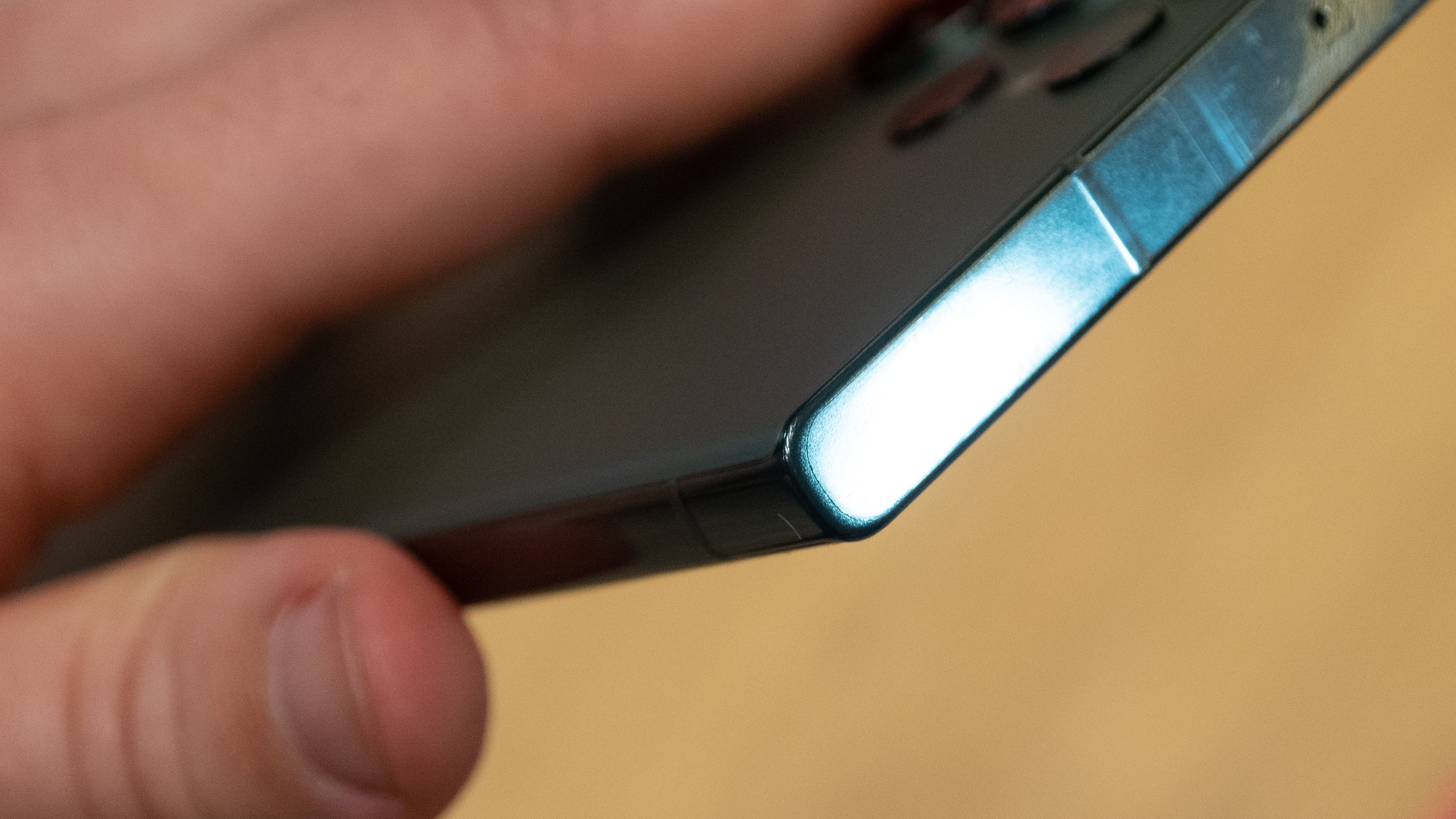
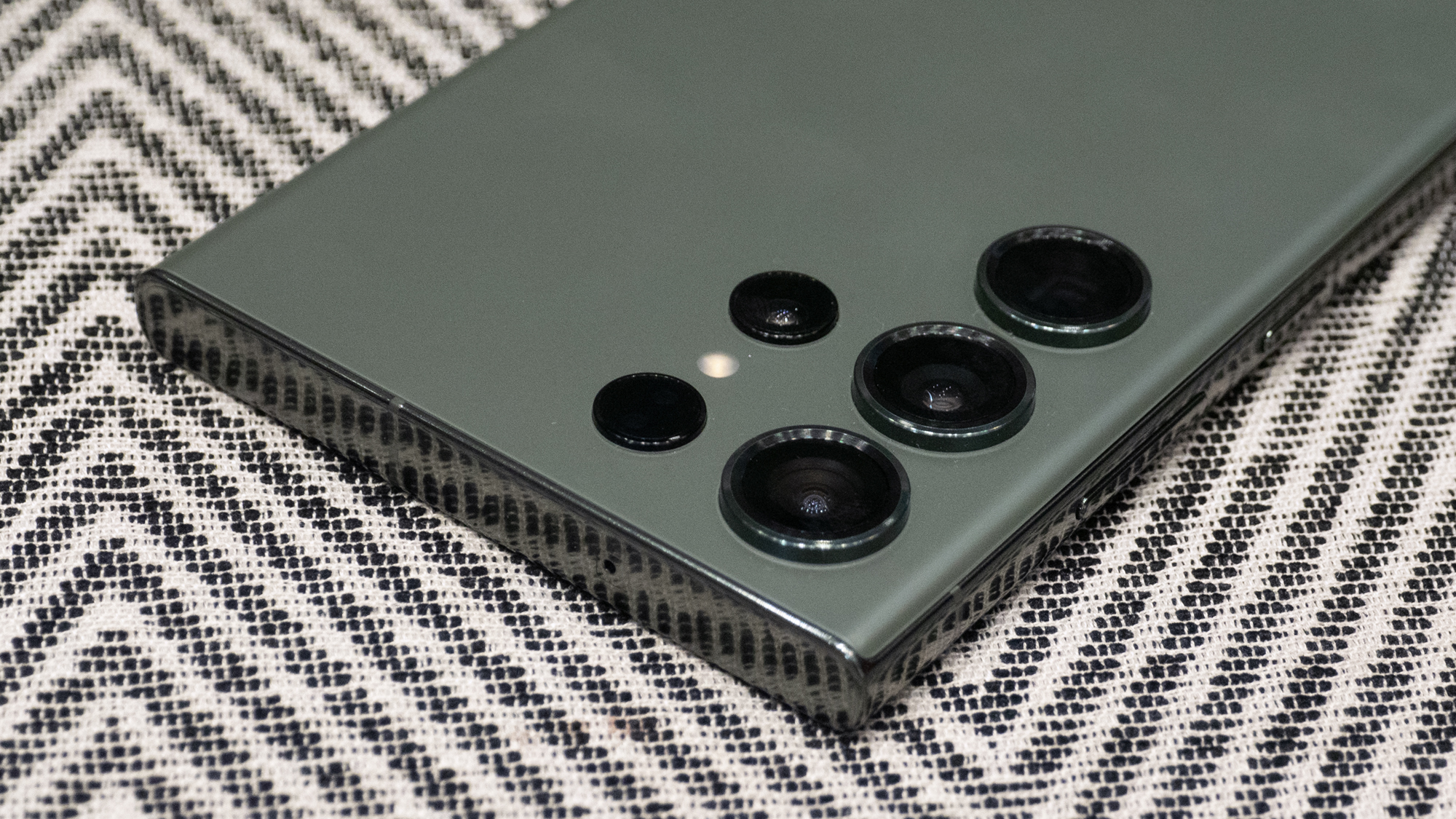
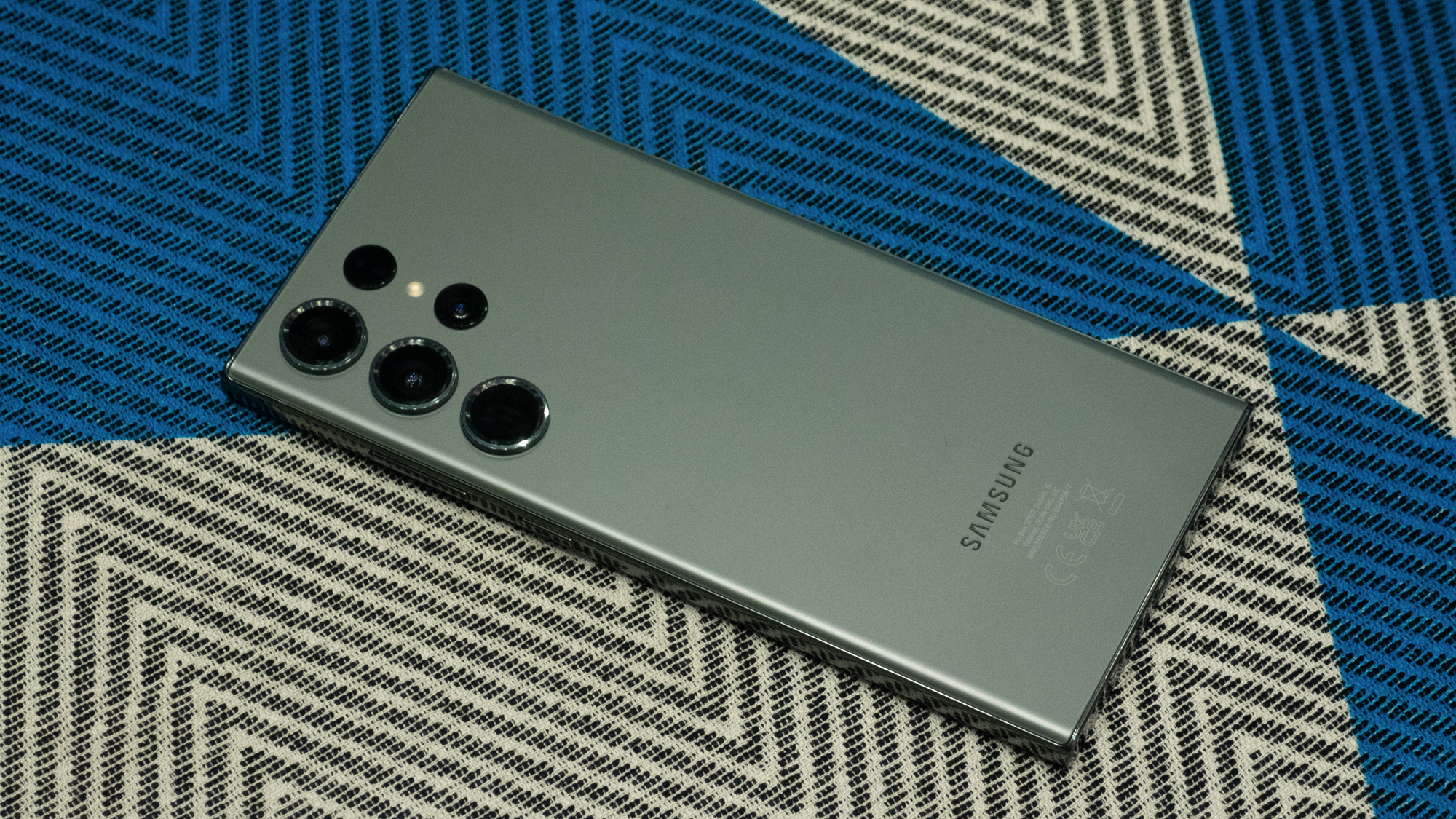

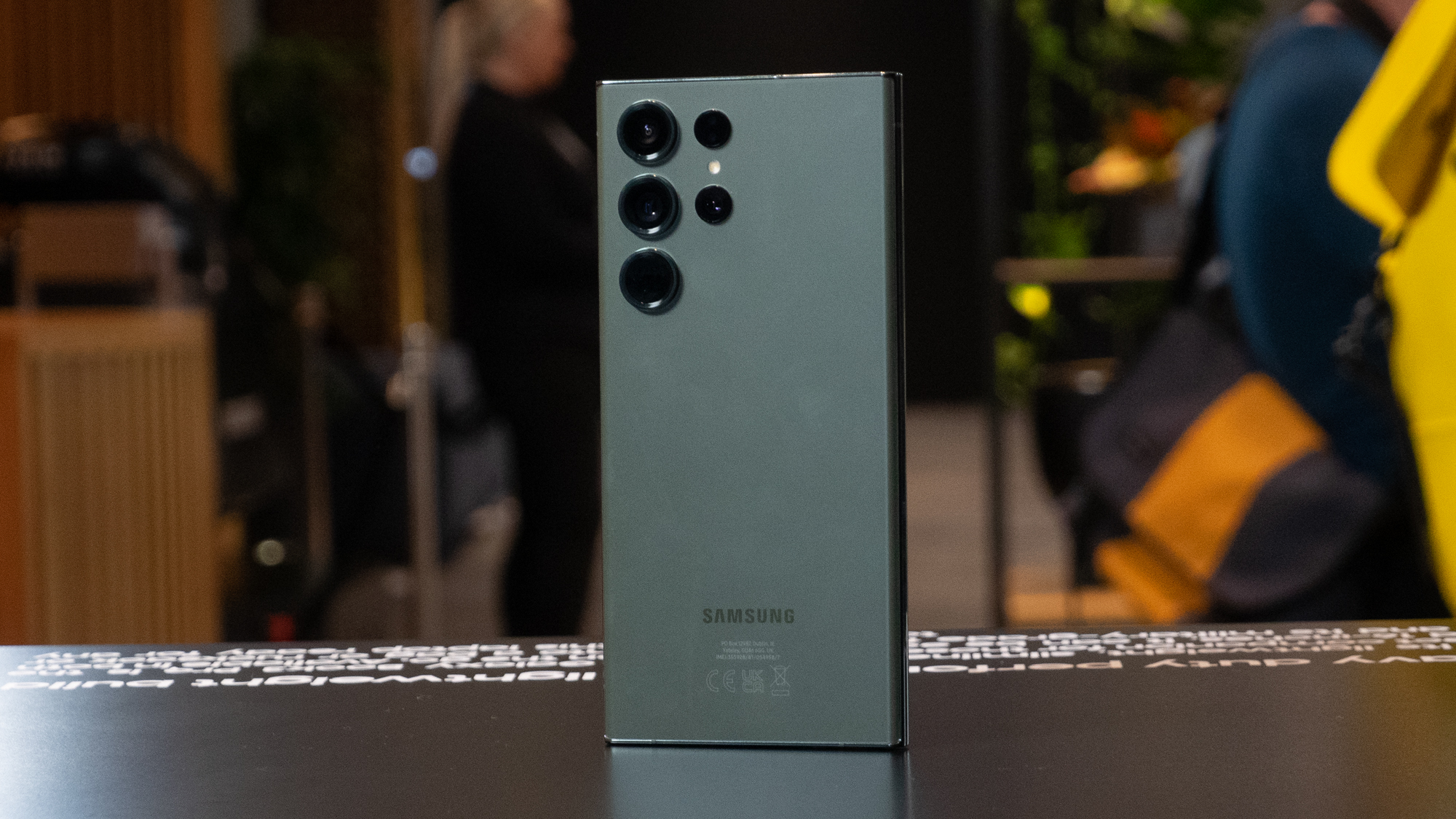
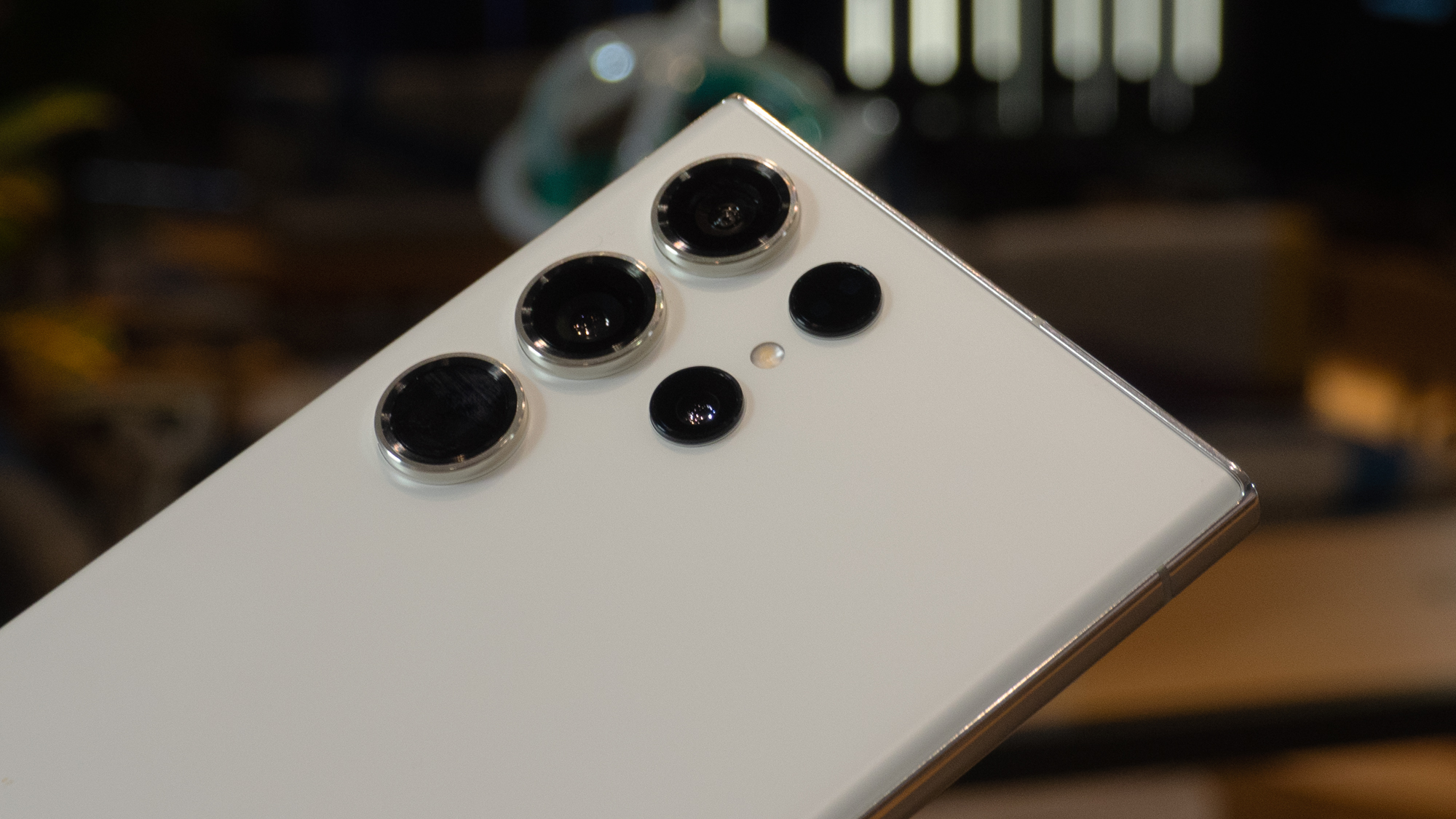
The company's excellent efforts in durability persist too, with IP68-certified dust and water ingress protection, a resilient Armor Aluminum alloy frame and – for the first time on any phone, the latest Gorilla Glass Victus 2 – from Corning. It's a good thing too, as the rounded edges (even if they are slightly less rounded this year), paired with that smooth front and back, and the sheer size of the phone make it tricky to wield one-handed, especially when compared to its smaller, flat-fronted S23 siblings.
For all the advanced technology that Samsung has managed to pack into the S23 series, it's also tried to up the ante in terms of environmentally-friendly materials, with the Ultra being the real champion of this initiative. 80% of the deco film used in the construction of the phone's back is recycled, as is 22% of the glass used across its body, along with 20% of the S Pen's inner cover – reportedly hewn, in part, from ocean-bound polyamide.
Samsung claims that other recycled materials that have been hammered into the shape of the S23 Ultra include discarded fishing nets, water barrels, PET bottles and pre-consumer recycled aluminum, which have contributed to the construction of components (12 in all – double that of the S22 Ultra) like the volume keys and SIM tray, speaker arrangement, 5G antenna arrangement and more.
While Samsung isn't alone in working to improve the the green credentials of its phones (the iPhone comes to mind), this is certainly the most vocal we've seen the company about a particular handset in this regards and it represents a push that will hopefully catch on with rival phone makers going forward.
- Design score: 4 / 5
Samsung Galaxy S23 Ultra review: Display
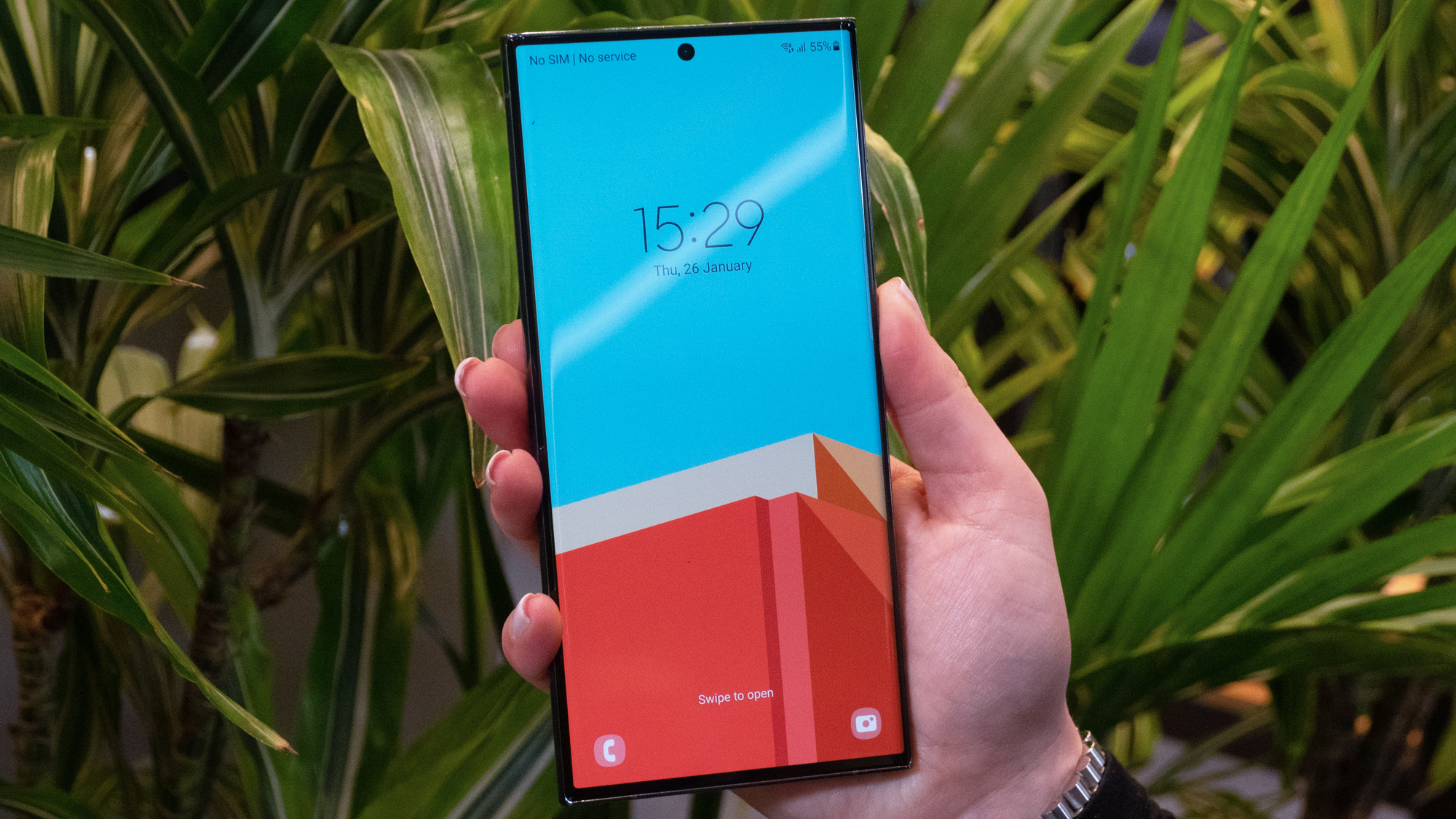
- Familiar display experience to predecessor
- Promise of more accurate colors and better eye comfort viewing
- Responsive S Pen stylus experience
Aside from that reduced curvature along its edges and greater protection thanks to that new Gorilla Glass Victus 2, the S23 Ultra's display offers a familiar viewing experience to its predecessor.
As on last year's Ultra, you get a 6.8-inch Dynamic AMOLED 2X panel, with a resolution of 1440 x 3088 and a dynamic refresh rate that can scale between 1Hz and 120Hz, automatically shifting to prioritize power efficiency or visual fluidity as needed. By having the display rate displayed on-screen using developer options, I was able to see the screen switch between 24Hz, 48Hz, 60Hz and 120Hz, which is a wider array of frequencies than I've seen from any other Android phone boasting a dynamic refresh rate, supporting Samsung's claims of greater power efficiency this generation.
Samsung's displays remain some of the nicest out there on mobile and the S23 Ultra's is no exception. Colors and visibility – even against strong ambient light – are great, with viewing angles showing minimal brightness drop-off and a nice consistency to colors. In fact, Samsung has apparently tuned the display to serve up more accurate colors against a wider array of ambient lighting scenarios this time around (three, to be precise), with what it calls its Advanced Vision Booster; adjusting tone and color as needed.
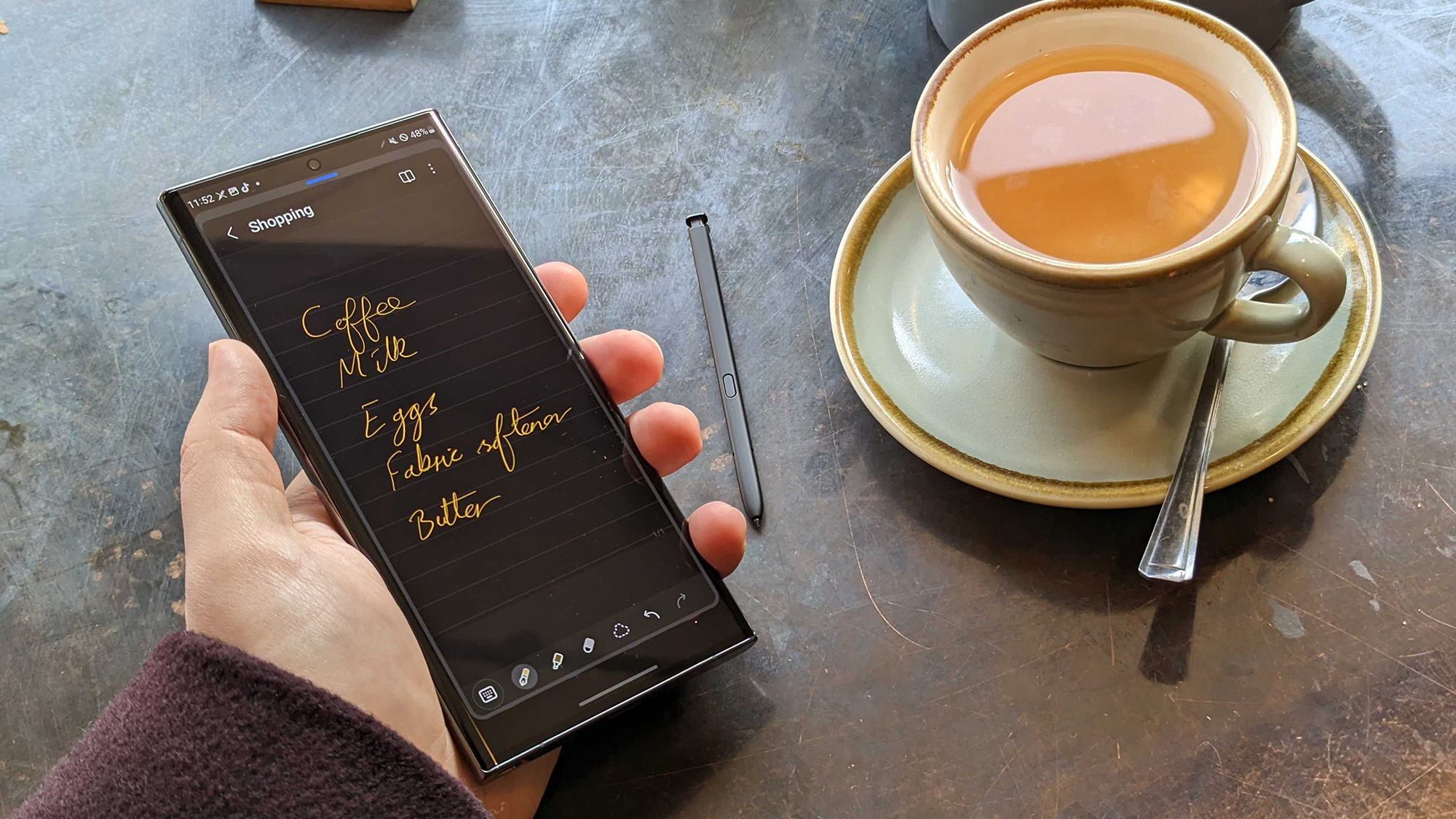
Max brightness still doesn't compare to the iPhone 14 Pro's impressive 2,000 nit peak (the S23 range all tops out at 1,750 nits), but in real-world viewing, movies, games and other visuals look exceptional. Meanwhile, Samsung isn't making any new claims of further-reduced S Pen latency or additional Air Gesture functionality this time around, but it's already impressively responsive (Wacom-supported tech that allows for 2.8ms latency) and the user experience has been augmented in other ways that appeal to productivity.
- Display score: 4.5 / 5
Samsung Galaxy S23 Ultra review: Camera
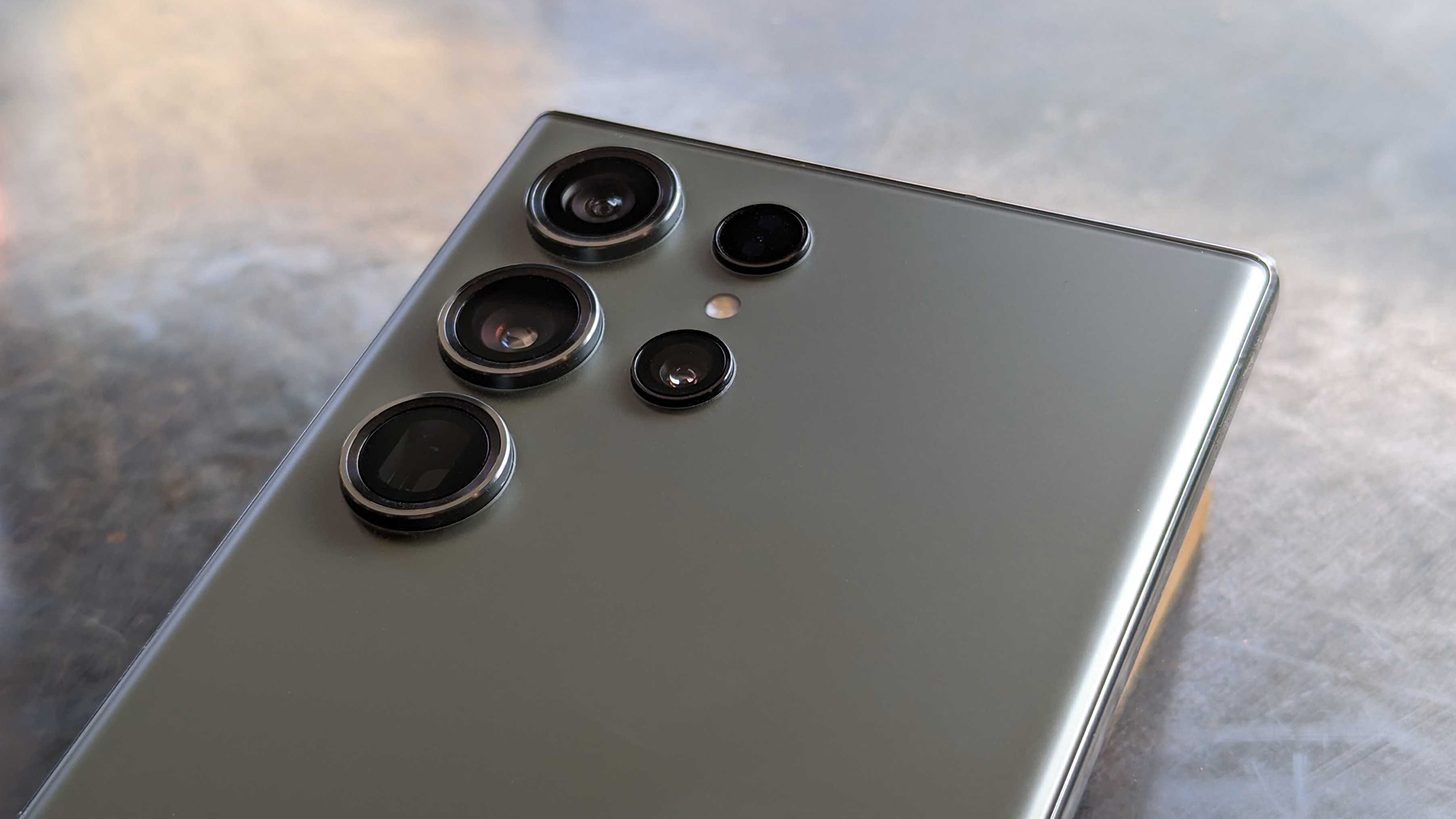
- First Samsung phone with a 200MP sensor
- Improved 'Nightography' experience for stills, portrait and video
- Integrated Expert RAW shooting now supports up to 50MP
Cameras are one area where the Ultra has always stood out when looking at the best Samsung phones available and the multi-sensor setup that the company's been using for the last few generations has consistently ensured that these devices find a place up at or near the top of our best camera phones roundup year after year.
While the 12MP ultrawide and dual 3x and 10x 10MP telephoto sensors on the back of the S23 Ultra feel decidedly familiar, the phone shrugs off the primary 108MP resolution sensor seen on previous entries in the series and replaces it – for the first time on a Samsung phone – with a whopping 200MP primary camera; thought to be the ISOCELL HP2 that TechRadar's cameras editor, Tim Coleman, dived into a few days prior to the S23 series' launch.
Such a change in hardware can sometimes result in a drop in quality for some manufacturers; with their camera teams needing time to retune their algorithms and color science to get the best from the new components (something that's happened with the likes of OnePlus in the past). But much as with Google's move to a new 50MP primary sensor on its Pixel 6 series and Apple's shift from a 12MP to a 48MP primary sensor the year after, with the iPhone 14 Pro line, it's clear that Samsung's camera team has ensured that the output from the S23 Ultra's new 200MP Adaptive Pixel Sensor offers just as consistent and impressive an experience as its predecessor, right out of the gate.
Samsung Galaxy S23 Ultra camera samples

Galaxy S23 Ultra (top) | Google Pixel 7 Pro (bottom)
S23 Ultra's zoom range (0.6x to 100x) compared to the Pixel 7 Pro's (0.5x to 30x).

The versatility of the S23 Ultra's camera is bolstered by its outstanding stabilization and impressive post-processing, retaining exceptional detail and color consistency across its entire zoom range in well-lit scenarios.

The S23 Ultra seems to default to matrix metering when using the standard photo mode, which usually yields great results but in higher contrast scenarios can lead to under or over-exposure of your subject (as seen in the 10x and 100x samples above).
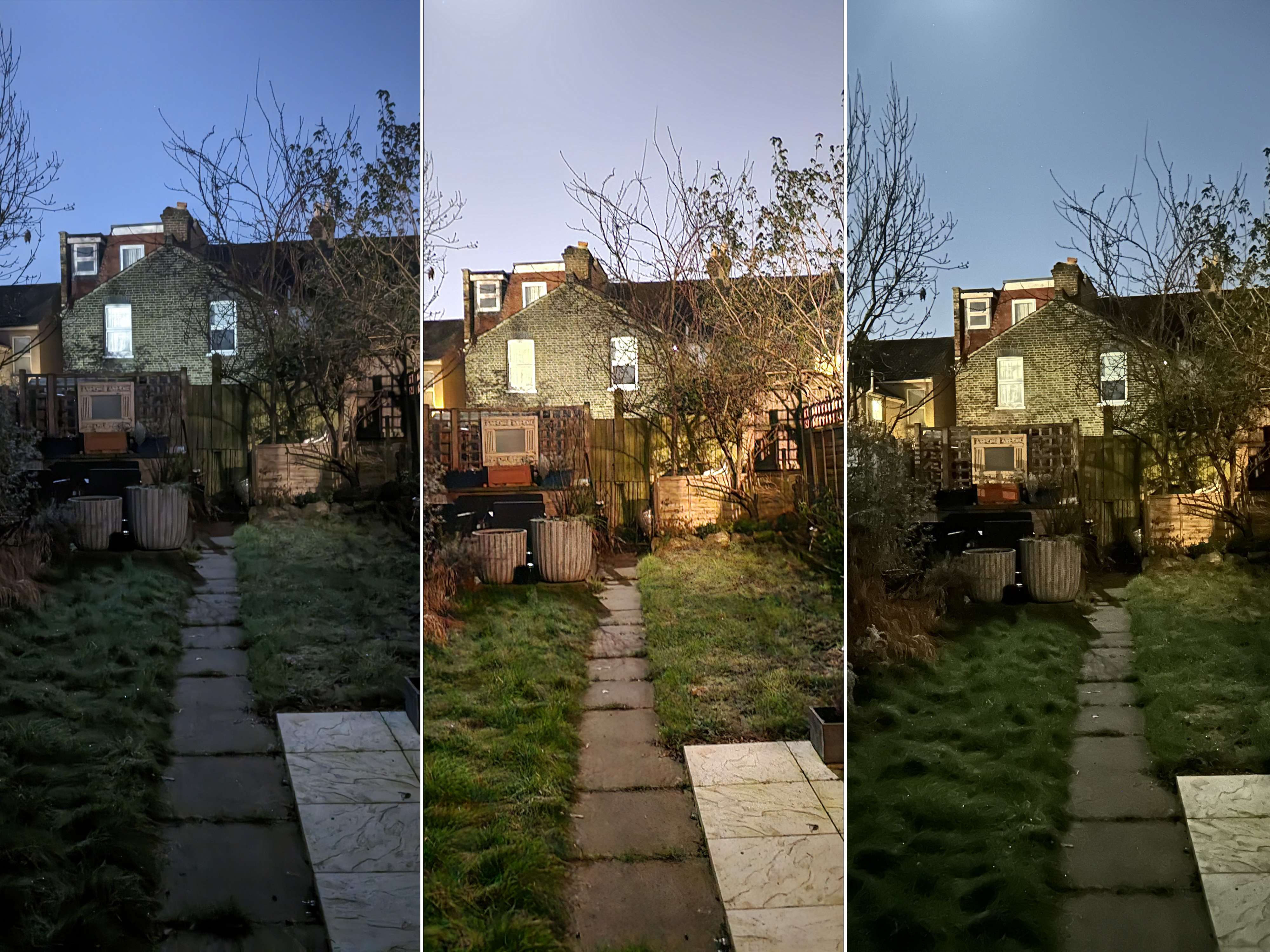
Pixel 7 Pro (left) | Galaxy S23 Ultra (center) | iPhone 14 Pro Max (right)
In very dark environments, the S23 Ultra handles night mode shooting very differently to its lead rivals, bring exposure up, revealing more in the darker areas of a scene, but sometimes at the expense of color accuracy and fine detail.
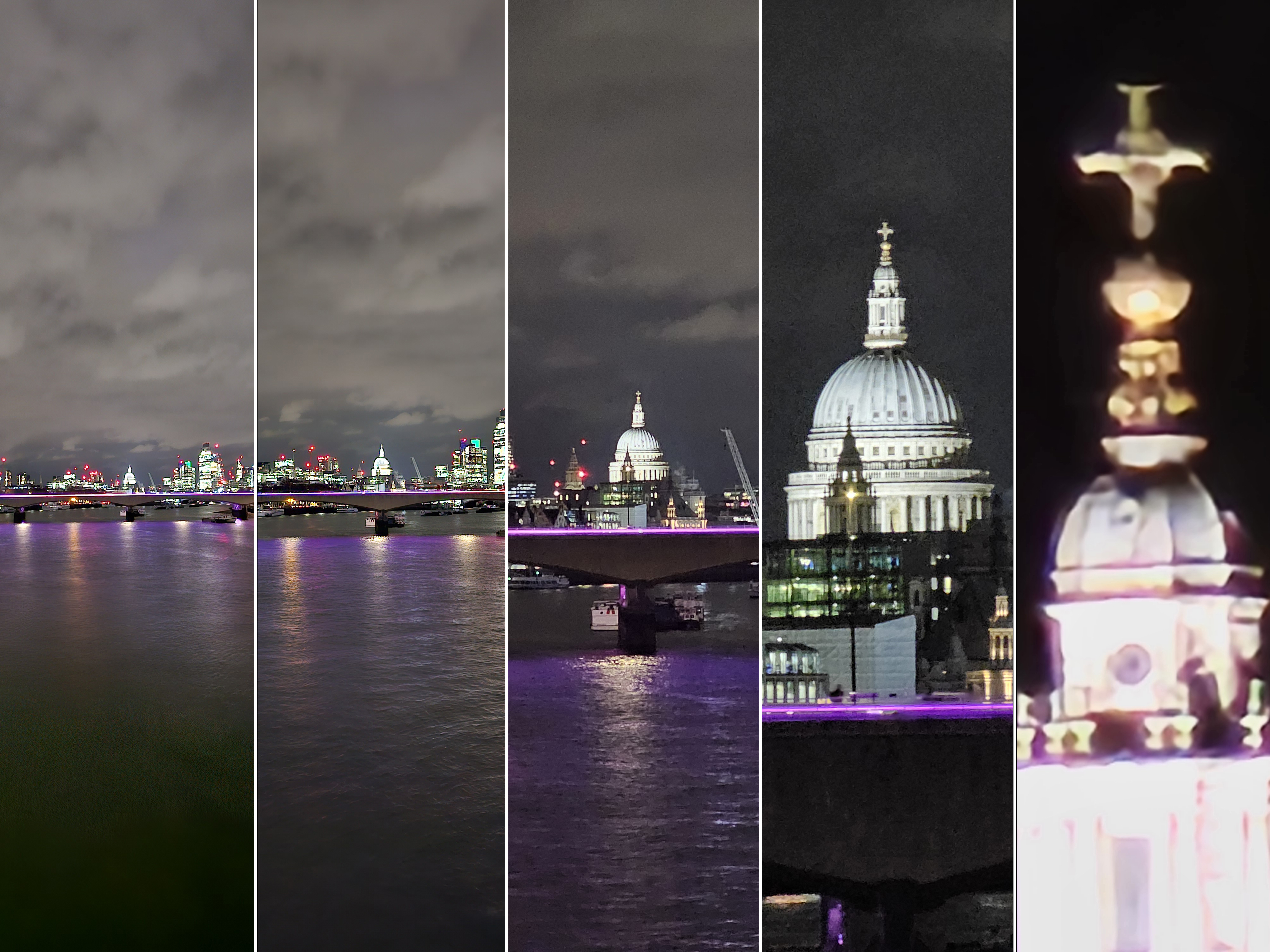
Samsung's efforts in 'nightography' aren't just hyperbole, it's a phenomenal phone for low-light shooting, even if results are a little stylized. What's more impressive is that it can deliver across the whole zoom range, especially up to its optical zoom ceiling of 10x.

While the previous samples with shot with the standard Photo mode, the above were taken using Night mode and highlight that the feature is best used in more extreme conditions with less light to work with, as the telephoto sensors in particular suffer from a green tinge and more noise here.

Sure, it may be little more than a party trick, but being able to capture a shot of the moon – from the Sea of Tranquility (top center) to the Tycho Crater (bottom right) – like this on a smartphone, always feels like magic.
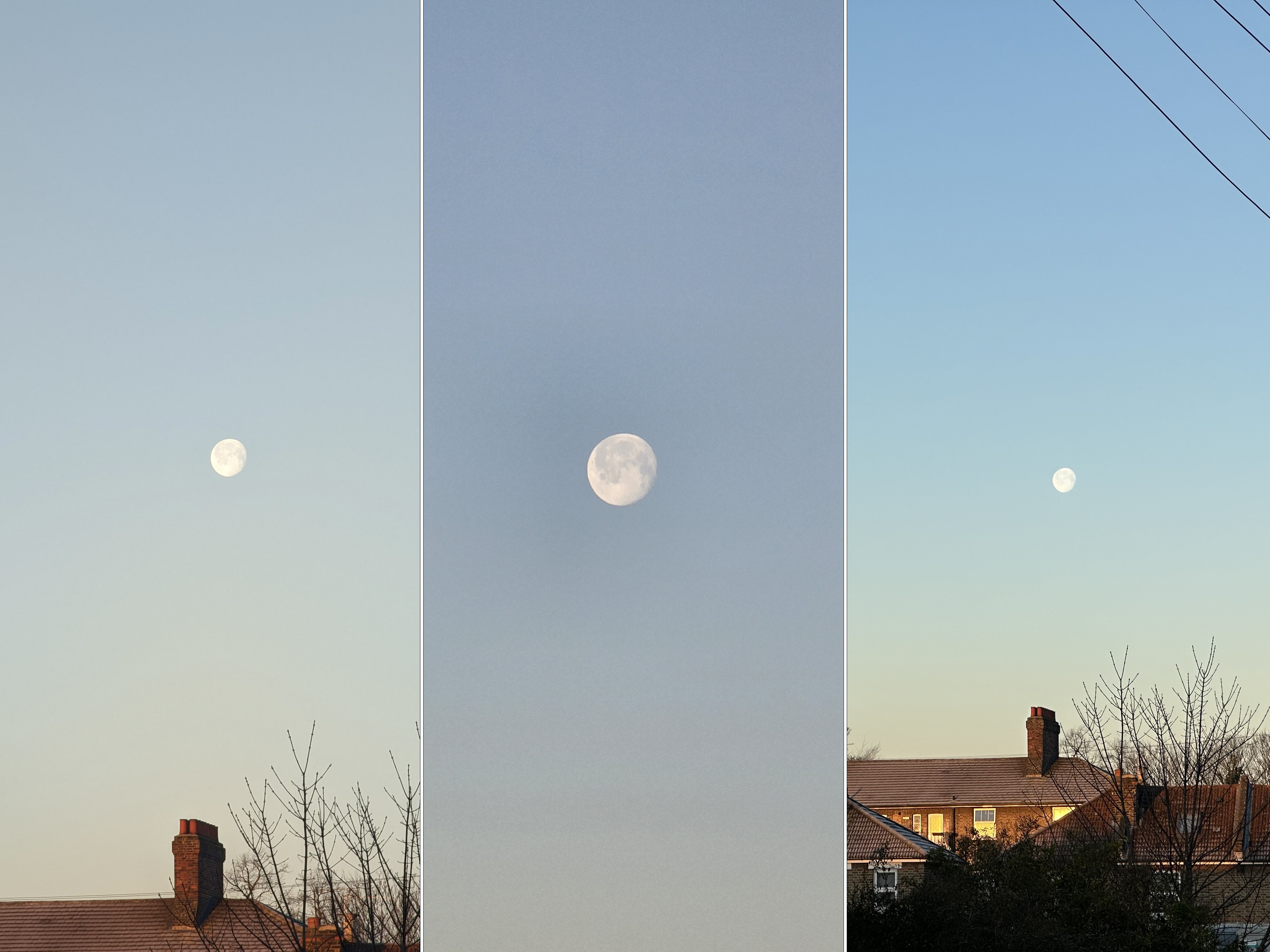
Pixel 7 Pro (left) | Galaxy S23 Ultra (center) | iPhone 14 Pro Max (right)
Notice the color difference in the sky between the S23 Ultra and its biggest rivals at their respective maximum optical zoom ranges (5x, 10x and 3x).

Pixel 7 Pro (left) | Galaxy S23 Ultra (right)
While both phones capture color beautifully, opt for the S23 Ultra if you like your colors and contrast with a little more pop, as standard.
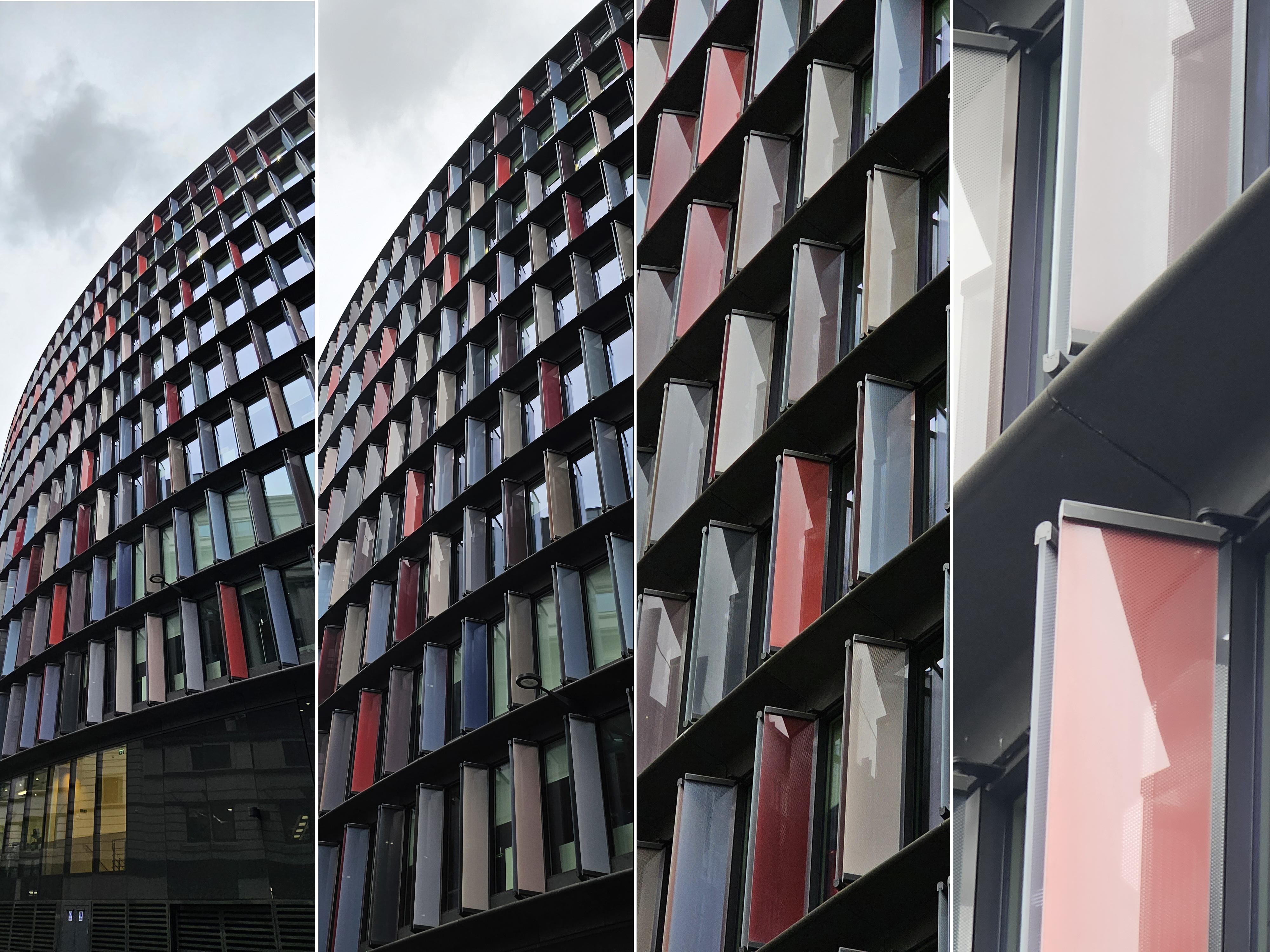
The (presumed) matrix metering mentioned earlier not only affects exposure, but color reproduction across the phone's various rear sensors. Notice how washed out the 10x zoom sample (left) looks, compared to the same section of the building at short focal lengths.

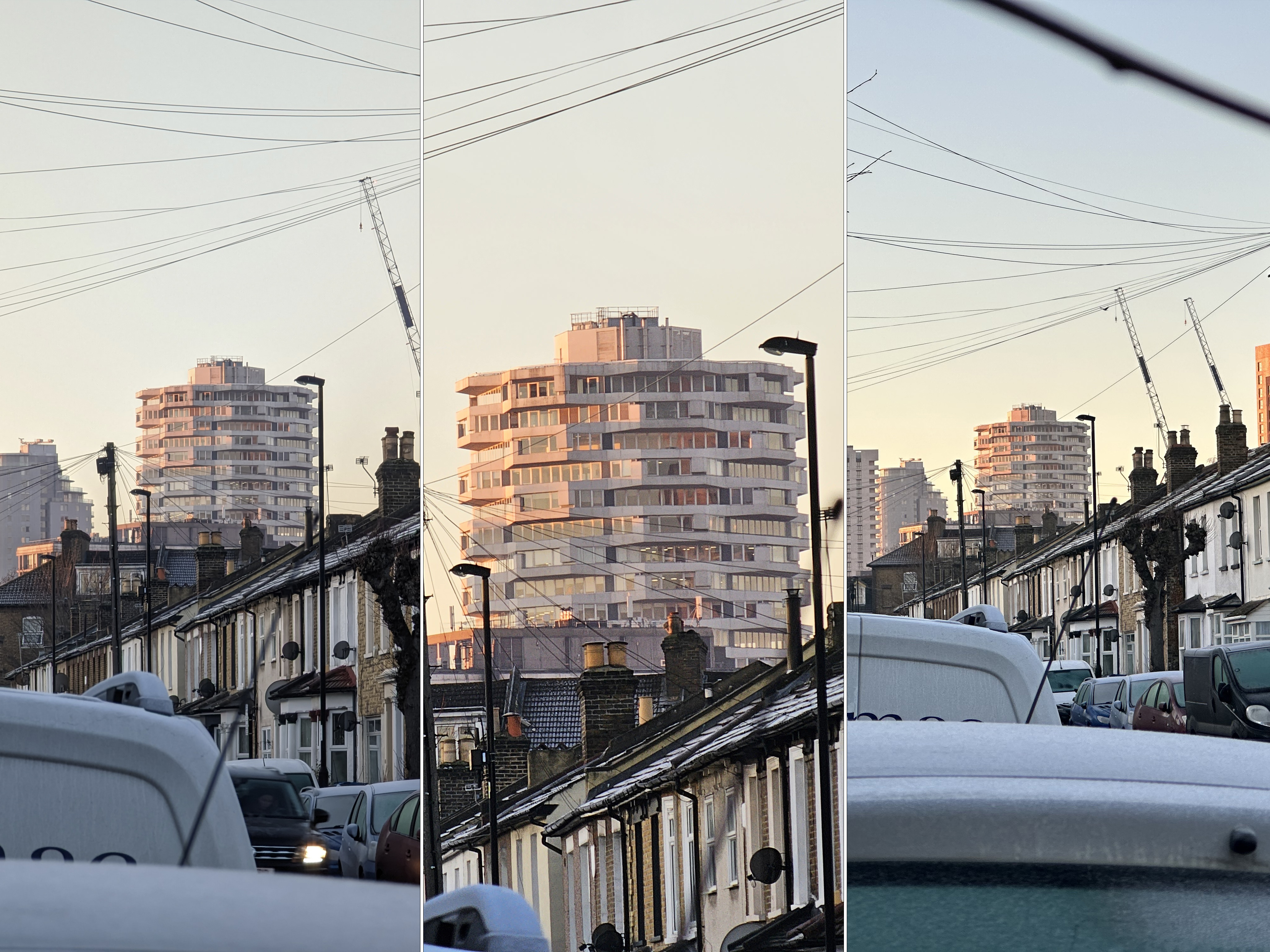
Pixel 7 Pro (left) | Galaxy S23 Ultra (center) | iPhone 14 Pro Max (right)
All three phones offer impressive detail capture at their maximum optical zoom ranges, however, in this example the Pixel's handling of dynamic range offers up greater detail in the darkest areas of frame.

Galaxy S23 Ultra (top) | Pixel 7 Pro (bottom)
Both the Ultra and the Pixel serve up a pleasing portrait photography at multiple focal lengths, with a nice level of bokeh and robust edge detection around the subject in both instances. The Pixel's blur looks more natural by default but both phones let you adjust the amount of blur and area of focus after the fact, which is really powerful.

While there's a degree of consistency – in terms of dynamic range across the S23 Ultra's zoom range in low light – the 3x sensor processed colors differently and the primary 200MP sensor used all that additional image data to quash noise far better than any other camera on the phone's back.


Samsung's bias for 'pop' means blacks along the cat's flank in this portrait shot are completely crushed; a scenario where shooting in Expert RAW might have been prudent.

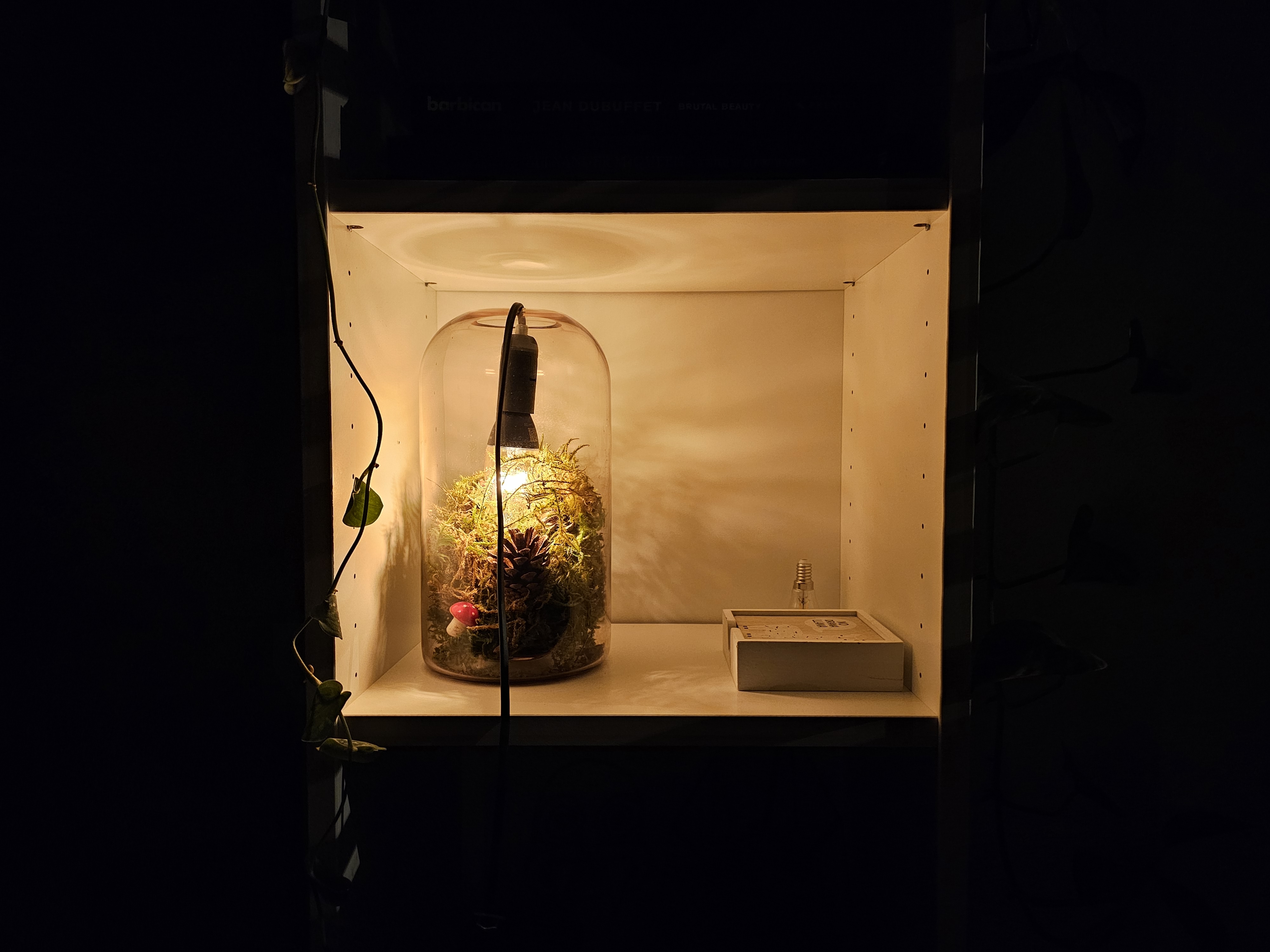

Main...

...ultrawide.



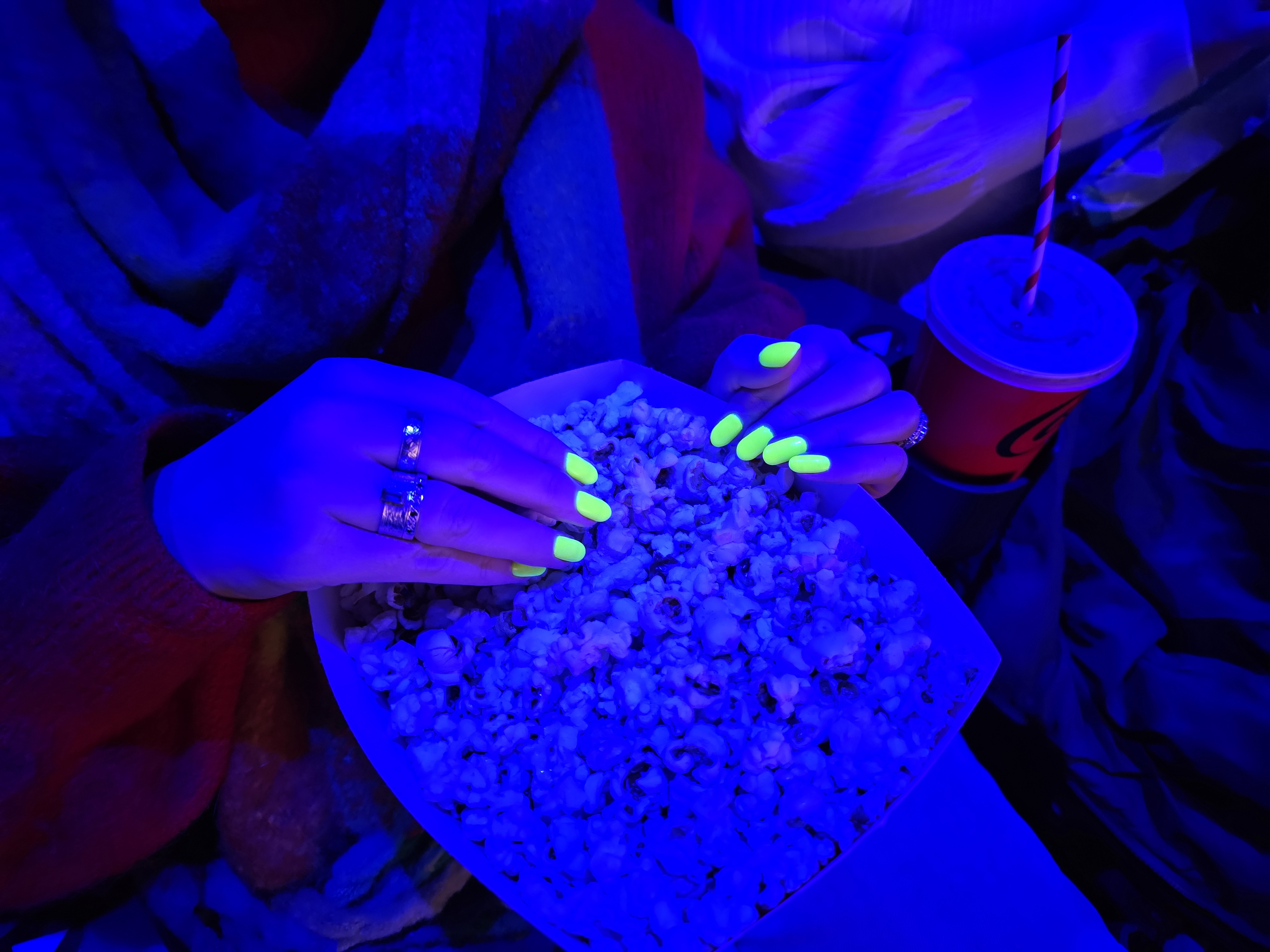
By default, the S23 Ultra's main camera pixel bins images by 16 to 1, down to 12.5MP (output as 12MP stills) that use all that additional pixel data to iron out image shake, while also taking in more light and retaining more color information. Speaking of which, low light photography is a big area of focus for the camera experience on this Ultra; with the promise of enhanced night shots across the board – including portraits – as well as a new astrophotography hyperlapse video mode.
Stabilization across stills and video has been improved too, with double the angle of movement now possible in the OIS (optical image stabilization) system, compared to last year's S22 Ultra (3-degrees on the S23 Ultra), along with improved VDIS (video digital image stabilization) and faster autofocus from the 'Super Quad Pixel' sensor, as Samsung has branded it.
For users who want to get more granular with the Ultra's photography experience, the Expert RAW mode – integrated into the camera UI – now supports an output of up to 50MP, rather than 12MP previously. The Ultra also lets you snap 200MP stills (as jpegs), if you want to play with the full sensor's available detail.

Original image (left) | Raw file w/ EV+3 (center) | Jpeg w/ EV+3 (right)
You can see just how much more image data and fidelity is preserved when adjusting a raw and a jpeg of the same image to the same exaggerated exposure value.
In practice, while shooting in raw allows for greater fidelity and significantly more robust editing – letting you pull more data out of the darkest or lightest parts of an image – the S23 Ultra seems to consistently under expose in Expert RAW and results all come with a graded profile as standard, rather than a neutral image.
In the pursuit of switching up sensors, all three of the S23 series also gain a new 12MP front-facing snapper this generation, set into the display (Samsung hasn't yet been bold enough to import the Z Fold series' under display camera), which holds promise and brings more consistency to the experience of owning an S23, regardless of model.

Samsung brands the S23 series' camera as its first 'Super HDR selfie camera'.

Pixel 7 Pro (left) | Galaxy S23 Ultra (center) | iPhone 14 Pro Max (right)
Anecdotally, the 12MP front-facer feels like a faster sensor than the one found on its predecessor, offering up a nice overall image with impressive dynamic range, as selfie snappers go.
In side-by side selfie tests with the Google Pixel 7 Pro and the iPhone 14 Pro Max, the S23 Ultra most closely matches Apple's flagship and offers a surprisingly (for Samsung) natural-looking final image, with impressive detail and what often came across as pleasing, more natural skin tones than the Pixel, which was uncharacteristically out of step against both Samsung's and Apple's phones in testing.
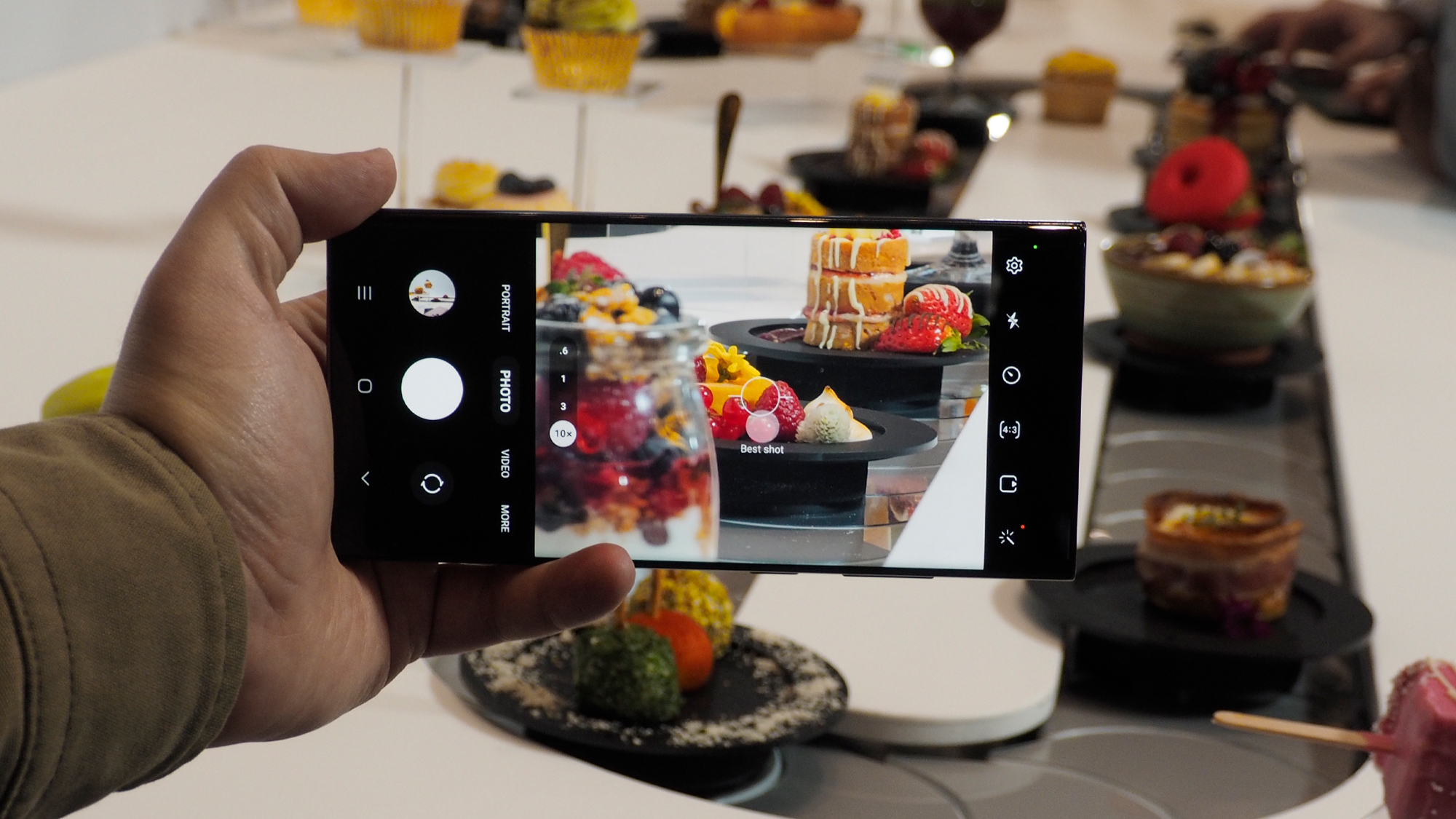
Samsung also continues to work closely with big social brands like Snap, TikTok and Instagram to ensure phones like the S23 Ultra benefit from higher fidelity image and video quality, as well as tighter integration with creative features within each social app, something rival Android phone makers miss out on.
- Camera score: 4.5 / 5
Samsung Galaxy S23 Ultra review: Performance

- Custom flagship-class chipset offers exceptional performance
- Faster and more efficient memory and storage than many rivals
- Performance gains over standard 8 Gen 2 are negligible
It's not really a secret that Samsung has connections in high places, building Wear OS 3 with Google and having co-developed the last few generations of its own flagship chips in conjunction with Qualcomm, but that partnership has matured into something exceptional for 2023.
Whereas previously, users in different markets could expect Galaxy S devices powered by either Samsung Exynos or Qualcomm Snapdragon silicon, the Galaxy S23 series gains Qualcomm's latest and greatest Snapdragon 8 Gen 2 chip worldwide.
This eliminates performance discrepancies that previously left users of Exynos-powered Galaxy S phones feeling behind the curve and also helps with aspects like camera processing (thanks to the use of the same ISP across regions) and battery life consistency.
Not only has the 8 Gen 2 already shown its capabilities (our OnePlus 11 review already offers first-hand insight into how the chip performs) but Samsung has managed to gain access to an exclusive tuned variant of the SoC, dubbed the 'Snapdragon 8 Gen 2 Mobile Platform for Galaxy'. In a nutshell, the prime Cortex-X3 core inside the chipset has been overclocked to 3.36GHz (rather than 3.2GHz, as is standard); without compromising efficiency or battery longevity.
As Samsung's Nick Porter pointed out during a one-on-one interview with TechRadar ahead of the phone's launch, the vapor chamber is "2.7x bigger on average across the whole S23 series" this year, helping with thermal efficiency, while the use of faster and more efficient LPDDR5X memory and UFS 4.0 storage, lend themselves to greater performance and quality of life too.
In testing, artificial benchmarks reveal what I suspected ahead of time: the S23 Ultra gains a slight edge over the OnePlus 11 – with its similar-but-technically-lesser chip – based on the numbers, but the Ultra's lead is so slight that you're unlikely to feel any real-world benefit. As such, that higher prime-core clock speed is far more beneficial for Samsung Galaxy S23 series marketing campaign than it is the end user, but regardless you're getting one of the most powerful, if not the most powerful phone on the market.
In real-world use, the pairing of the new chipset, RAM and storage collectively deliver performance that – as you'd hope for a device with the S23 Ultra's standing and price tag – feels rock-solid. The most demanding task the Ultra faced during review was running the graphically demanding game Genshin Impact, with settings intentionally set to their upmost limits. Everything ran smoothly for the 20 minutes of play time, but the phone did get noticeably hot, to the point where I'd suggest sticking with the title's default settings (at which it still looks and runs fantastically).
- Performance score: 4.5 / 5
Samsung Galaxy S23 Ultra review: Battery
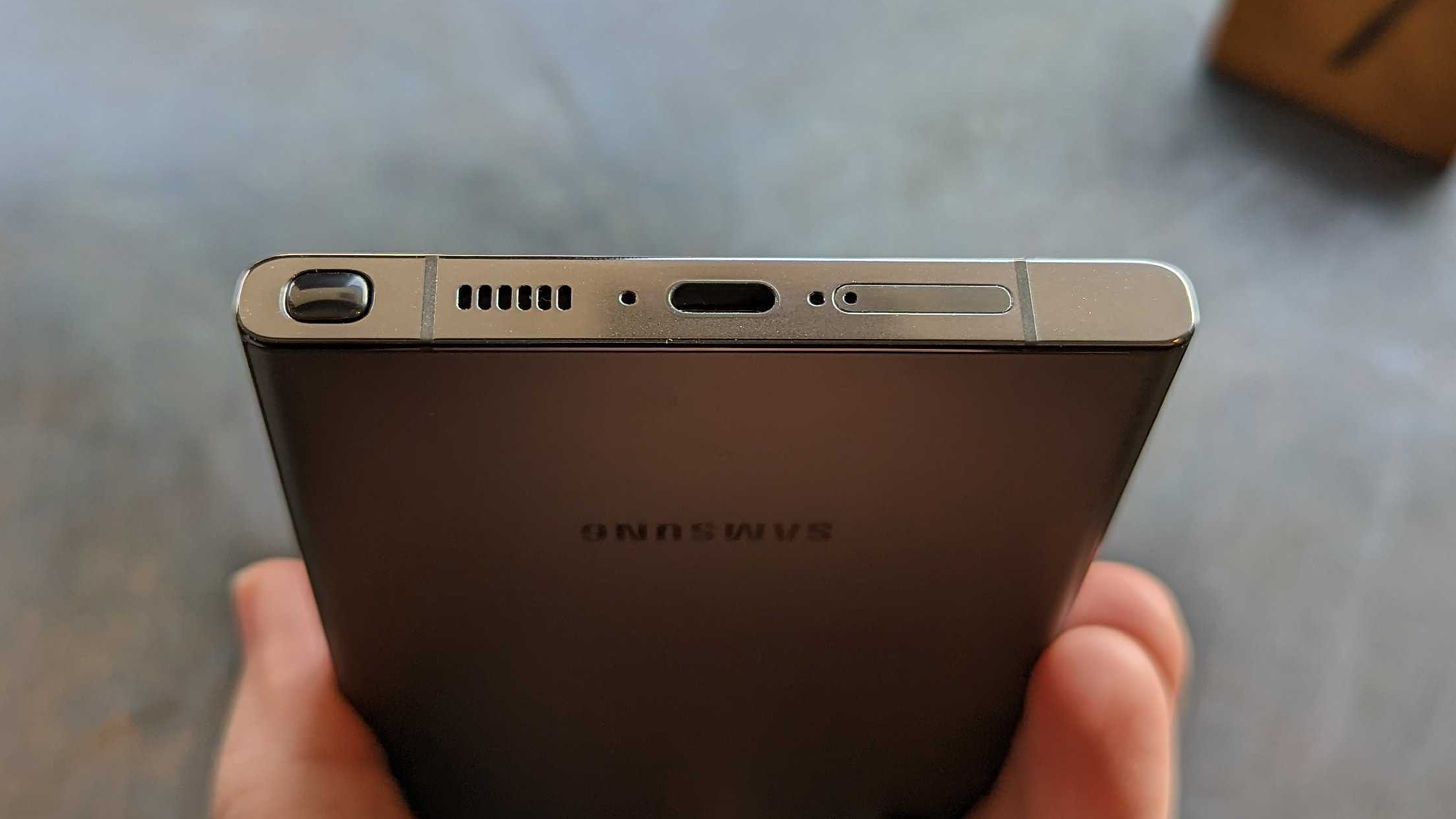
- Up to 45W wired charging
- 15W wireless and 4.5W reverse wireless charging
- Same capacity battery as S22 Ultra, but 20% improved efficiency
The battery specs read the same as the S22 Ultra, with a 5,000mAh cell inside the S23 Ultra supporting 45W wired charging (along with wireless and reverse wireless charging), however, Samsung claims that the collective effect of the new hardware efficiencies and tighter integration between hardware and software result in a 20% improvement that Porter claims delivers "the longest ever battery life on a Galaxy S smartphone;" and I'd be inclined to agree.
While the 100W charging speeds of OnePlus 11 and 125W speeds of the Motorola Edge 30 Ultra both leave the S23 Ultra in the dust, actual longevity on Samsung's new uber-flagship is greatly improved, despite the phone having the same-capacity battery as its predecessor.
What was a one-day phone at best now lasts a day and a half, in normal usage and will still see you through a full day, even if you plan on streaming Disney Plus with brightness pushed up or want to dive into an hour of CoD: Mobile or Wreckfest.
In testing, the S23 also delivered some of the longest screen-on time per charge of any phone we've tested recently, at approximately eight hours; surpassing rival devices with similarly-capacious batteries by at least half an hour.
- Battery score: 4.5 / 5
Samsung Galaxy S23 Ultra review: Software

- Android 13 w/ One UI 5.1
- Four years OS & five years security updates
- Customizable and well-featured
Samsung is class-leading, when it comes to making the best Android phones for update support, promising four years of OS updates and five years of security updates across the Galaxy S23 series; with all three devices running on the latest Android 13 – dressed in the company's own One UI 5.1 – out of the box.
It should feel like a familiar experience for existing Samsung Galaxy owners, with squircle icons and a generally flat graphical style as standard, dressed with a few new additions that appear to focus on collaboration, convenience and security.
Samsung Notes now allows for simultaneous creators to work within a single document collaboratively, routines and modes can be set to suit different scenarios – adjusting settings accordingly and an upgraded privacy dashboard should dispel ambiguity around how secure your device is.
Air Command and Air Gestures remain in place as part of the S Pen experience, offering the ability to control the camera, translate text and cut and paste on-screen content instantly, with simple stylus-driven actions, although camera controls in particular take a little getting used to.
While One UI won't be to everyone's tastes, it's unique, fairly customizable and displays a level of polish that's evident from initial setup to everyday use, and which you'll be hard-pressed to find elsewhere. Want to scan a QR code to connect to Wi-Fi during setup, instead of having to type out your password? Done. Want your device to auto-restart when it senses performance degradation? There's a toggle for that. Want to run two instances of the same messaging app logged into different accounts simultaneously? There's an option for that too.
- Software score: 4.5 / 5
Should you buy the Samsung Galaxy S23 Ultra?
| Attributes | Notes | Rating |
|---|---|---|
| Value | Despite double the base storage, it's more expensive that its predecessor in most markets and the S22 Ultra was already a pricey phone | 3.5 / 5 |
| Design | Almost identical to the S22 Ultra's square form, with ergonomic changes that, while appreciated, don't make it any more pocketable | 4 / 5 |
| Display | A stunning display with even greater color accuracy than previously | 4.5 / 5 |
| Camera | Iconic Ultra versatility with a new sensor that improves low light shooting | 4.5 / 5 |
| Performance | The best-performing Android phone on the market, if not the best-performing phone outright | 4.5 / 5 |
| Battery | Efficiency improvements deliver far greater battery life and the same charging experience as before | 4.5 / 5 |
| Software | Customisable, polished and plenty of updates in the long-term | 4.5 / 5 |
Buy it if...
You want the best Android phone out there
There's little the Samsung Galaxy S23 Ultra doesn't do and do well by modern smartphone standards. It has everything you could need, plus a few extras.
You want one of the best camera phones on the market
Consistency is hard to achieve between camera sensors and the S23 Ultra does a great job of offering a persistent photographic experience, while also embracing a new sensor and improving low light performance.
You need as much power as possible
Whether for gaming, multitasking or some other productivity use case, the Galaxy S23 Ultra offers some of the most potent hardware currently available on a smartphone, only really contested by Apple's iPhone 14 Pro series, but like for like comparisons get tricky between the two, when it comes to comparing performance; Apples to oranges, if you will.
Don't buy it if...
Money is a concern
Ultras are marketed as the best of the best, but that comes at a high cost and year on year the S23 Ultra is even pricier than its predecessor in a lot of markets.
You don't like big phones
It's not just big, the squared silhouette of the S23 Ultra means it's especially poorly suited to pockets. One-handed use is also a challenge.
You hate One UI
Samsung's take on Android won't be for everyone; with its own fonts, additional features and distinct aesthetic. While there's a degree of customization on offer and you can use third-party launchers to mask parts of the user experience, you won't be able to hide the Samsung-specific touches outright.
Samsung Galaxy S23 Ultra review: Also consider
The Samsung Galaxy S23 Ultra is Samsung's statement piece for this point in the year and it's one that's hard to ignore but if you're after a class-leading phone that doesn't come from the South Korean tech giant for one reason or another, here are a handful of alternatives.
While there was never any question that Samsung would be offering up a new Ultra for 2023, there was nothing inherently wrong with its predecessor, and aside from running on the previous year's internals and a lower resolution primary camera, you're getting a very similar experience from a device with a year's worth of price reductions under its belt worth considering.
If you're after a large-screened flagship phone with class-leading performance and a capable camera setup that isn't the Galaxy S23 Ultra, Apple will accept a similar amount of money for their latest top dog.
If Samsung's take on Android simply isn't for you, or you want a similar experience in a different design, Google's Pixel 7 Pro offers an equally stunning screen, a compelling camera with a 5x optical zoom and a custom-built flagship chipset, tailor-made for sorts of AI-based workloads that we're seeing more and more of.
| Samsung Galaxy S22 Ultra | Apple iPhone 14 Pro Max | Google Pixel 7 Pro | |
|---|---|---|---|
| Price (from): | $1,199.99 / £1,149 / AU$1,849 | $1,099 / £1,199 / AU$1,899 | $899 / £849 / AU$1,299 |
| Dimensions: | 163.3 x 77.9 x 8.9mm | 160.7 x 77.6 x 7.85mm | 162.9 x 76.6 x 8.9 mm |
| Weight: | 229g | 240g | 212g |
| OS (at launch): | Android 12 | iOS 16 | Android 13 |
| Screen Size: | 6.8-inch | 6.7-inch | 6.7-inch |
| Resolution: | 3088x1440 | 2796 x1290 | 3120x1440 |
| CPU: | Snapdragon 8 Gen 1 / Exynos 2200 | A16 Bionic | Tensor G2 |
| RAM: | 8 / 12GB | 6GB (est) | 12GB |
| Storage (from): | 128GB | 128GB | 128GB |
| Battery: | 5,000mAh | 3,200mAh | 5,000mAh |
| Rear Cameras: | 108MP Wide, 12MP ultrawide, 10MP telephoto (3x), 10MP telephoto (10x) | 48MP wide (24mm f/2.8), 12MP ultra-wide (13mm f/2.2). 12MP telephoto (77mm f/2.8) | 50MP main, 48MP 5x zoom, 12MP ultra-wide macro |
| Front camera: | 40MP | 12MP | 10MP |
How I tested the Samsung Galaxy S23 Ultra
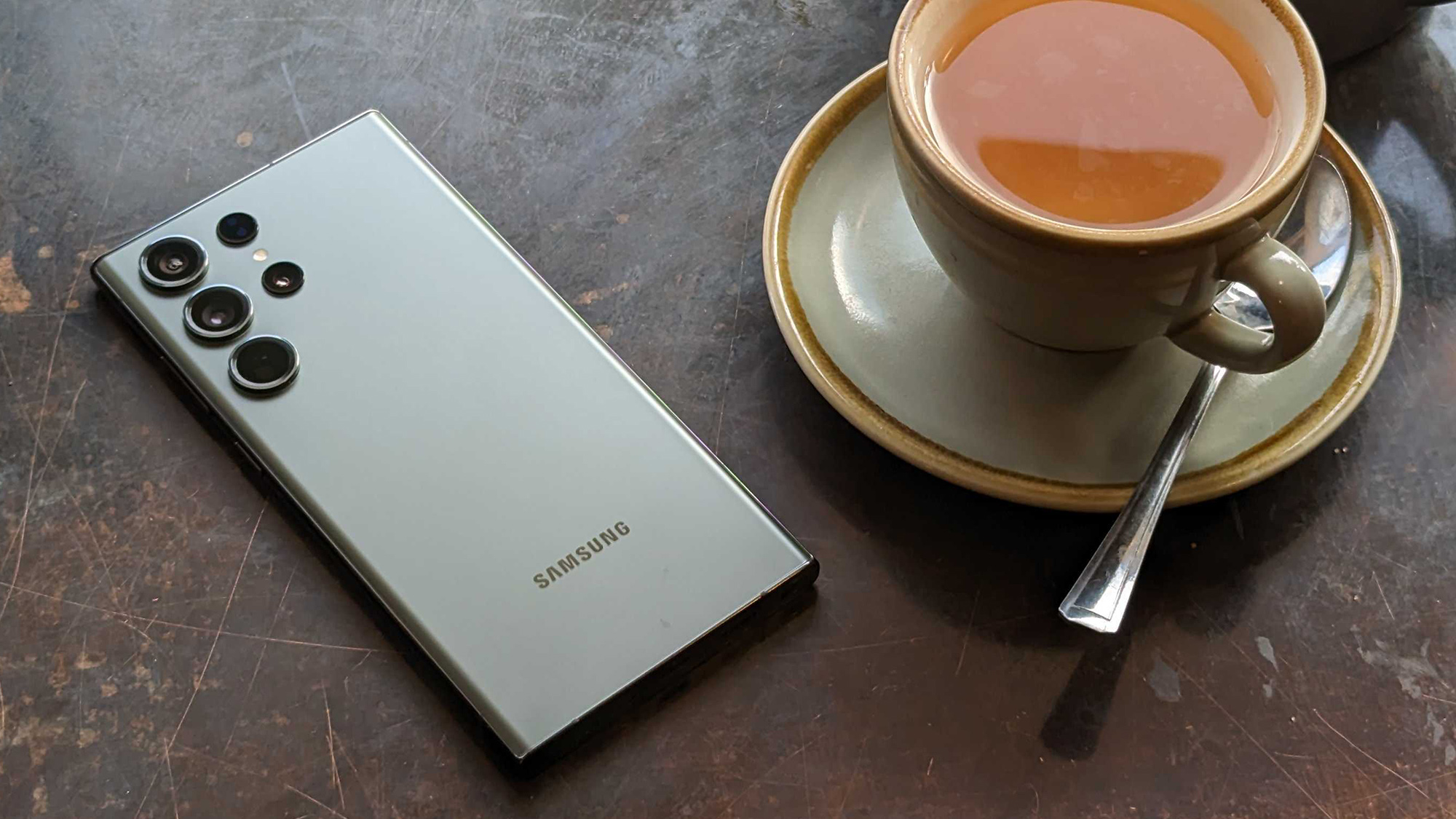
- Review test period = 11 days
- Testing included = Everyday usage, web browsing, social media, photography, video calling, gaming
- Tools used = Geekbench 5, Geekbench ML, GFXBench, native Android stats
I lived with the Samsung Galaxy S23 Ultra as my primary device for over a week and a half, using it for everything from making and taking calls, to photo and video capture, scrolling through social media, playing music, gaming and even to jot down the occasional note.
That killer display lent itself exceptionally well to watching episodes of Dropout's Dimension 20 on my morning and evening commute, and pairing it with the phone's class-leading performance allowed for some fast-paced sessions of Apex Legends Mobile, without me ever feeling like I was waiting for the phone to catch up.
While I value real-world feel and performance above all else, sometimes it's easier to quantify elements of a device to better assess manufacturers' claims of performance, power or aptitude.
With most phones, I use Geekbench 5 for CPU testing (the S23 Ultra landed the highest scores of any Android phone we've tested to date), Geekbench ML for machine learning and AI benchmarking (using NNAPI, for those curious) and GFXBench's selection of on-screen tests, with the display set to its highest supported refresh rate and resolution, to stretch the GPU. Battery life was assessed based on real-world usage, with Android natively including screen-on time as one additional useful metrics.
I bring 12 years of industry experience to my role as Senior Phones Editor here at TechRadar. With a focus on phones, tablets and wearables in the consumer space, I'm well versed in what the market has to offer and how to assess a device like the Samsung Galaxy S23 Ultra, and how it fits into the landscape of that market, as well as how well it does, or doesn’t suit the needs (and the budgets) of typical users
Note: the iPhone 14 Pro Max used for camera comparison in this review was supplied by Vodafone UK, who offer the phone up from £57 per month, with a £49 upfront cost, on a 36-month Phone Plan, with a 24-month 25GB Airtime Plan.
First reviewed February 2023

Alex joined as TechRadar's Senior Phones Editor in June 2022, but brings over a decade's worth of experience to the role, with an expertise in smartphones, tablets and wearables. He's covered keynotes hosted by the biggest brands and attended the launches for some of the most influential mobile products of the last few years. His experience was amassed at some of the most reputable consumer technology publications out there, including GSMArena, TechAdvisor and Trusted Reviews.
